When you compose your iPhone photos, do you always try to get a clear shot of the subject, without anything getting in the way? If so, you might want to try doing just the opposite. Shooting through other objects to distort, frame and transform your subject can make for much more interesting photos. In this tutorial you’ll discover ten exciting ways to take more creative iPhone photos by shooting through a variety of objects.
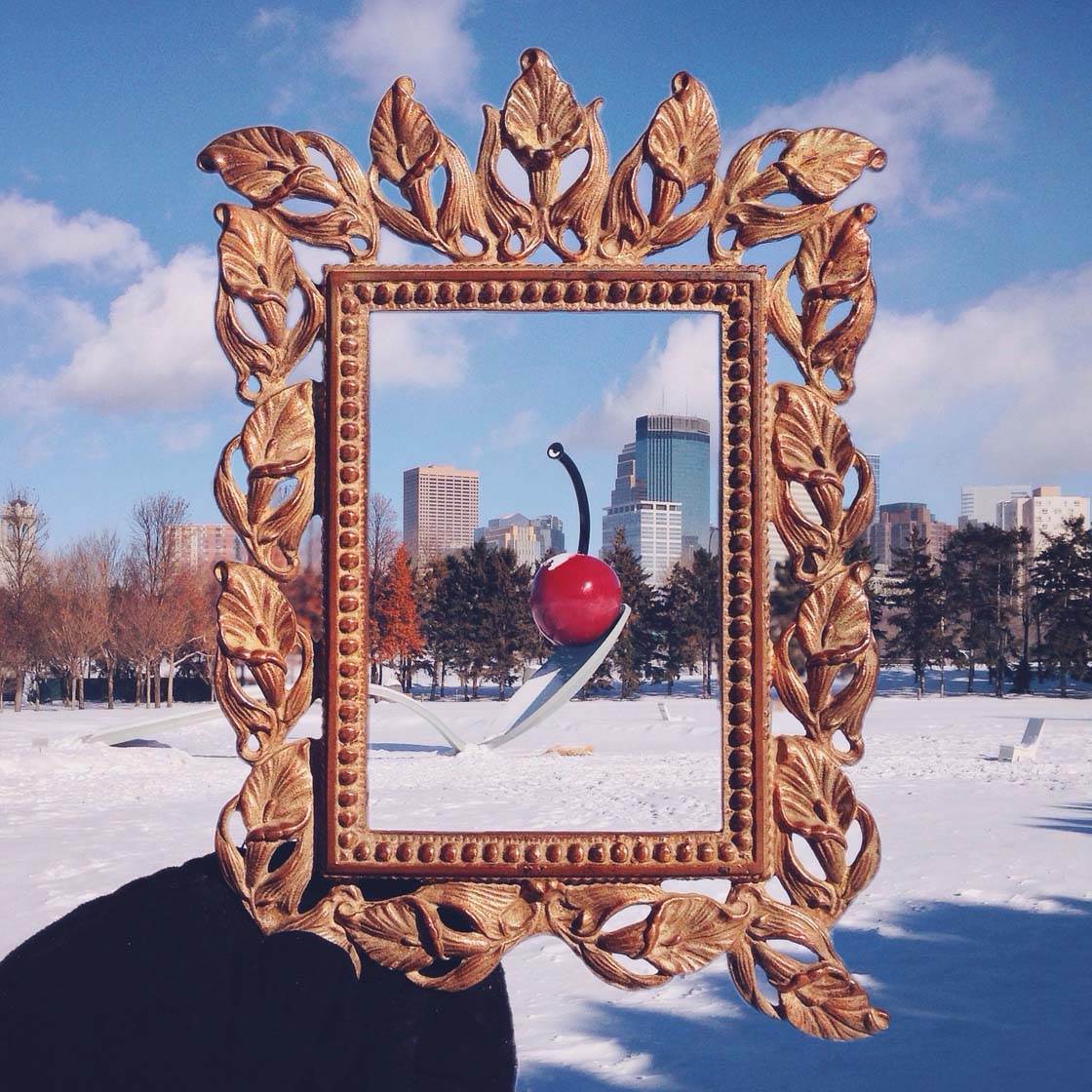
1. Windows With Water Droplets
A rain-covered window is a classic example of how shooting though an object can produce a more interesting and creative photo.
Shooting through raindrops on a window can add a wonderful mood to your photos. And it’s also great for adding an abstract quality to your images. As well as using raindrops, you could also use condensation water droplets on the inside of a window.
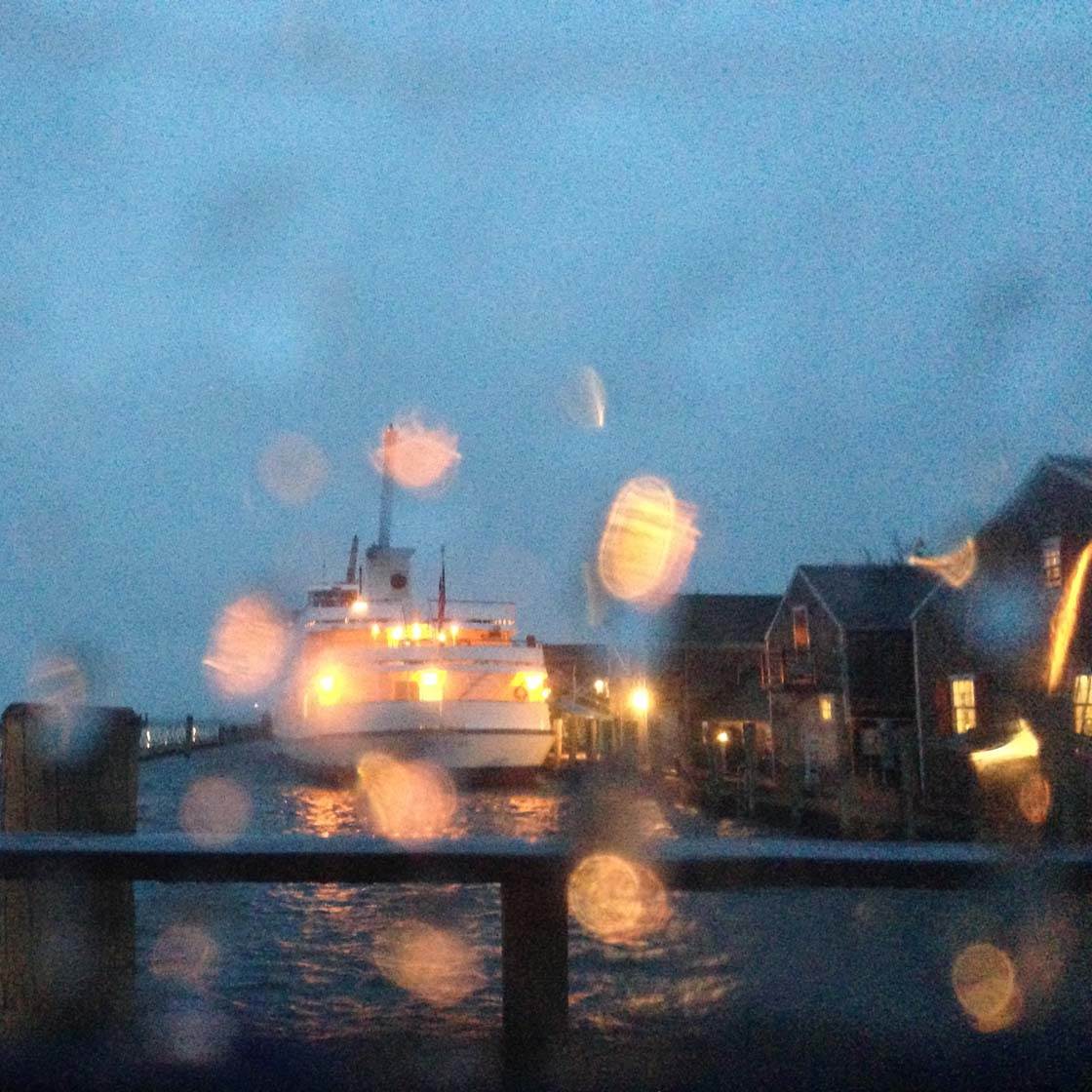
If you’re shooting at night, try to capture the street lights shimmering through the water droplets. This will add a dreamy and romantic atmosphere to your images.
You can experiment with different compositions to create different effects. For example, you could fill the entire frame with the water droplets, preferably with a colorful scene behind the window, such as the sunset in the photo below.
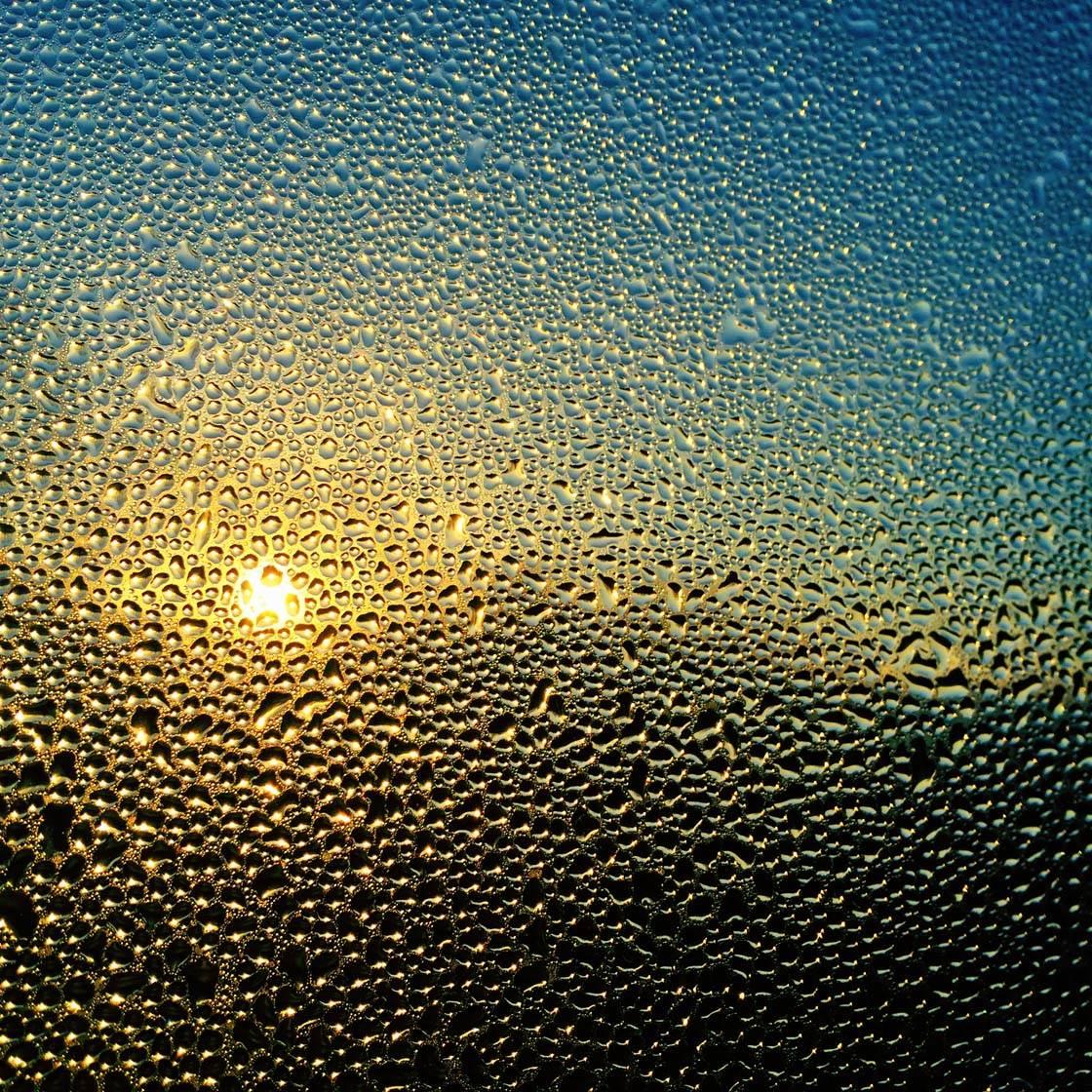
Allowing the water droplets to completely dominate the photo will give a fresh perspective on a familiar scene. It also allows you to create a stunning abstract image.
Another technique you can try is to frame just part of the image with the water droplets, as shown in the photo below. This gives you a sense of the window that you can just barely make out, and creates an interesting frame around the subject outside.
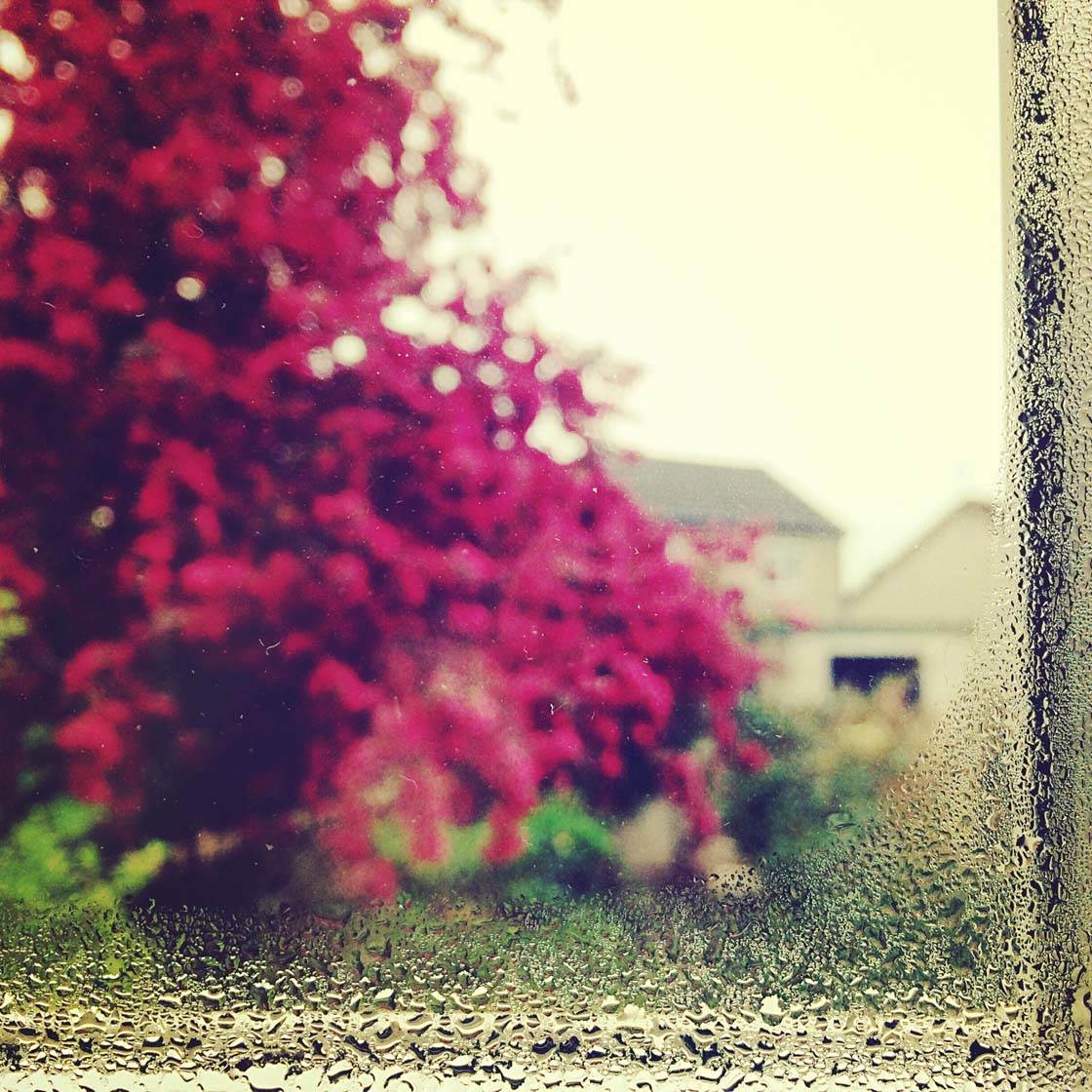
When shooting water droplets through glass, pay attention to your focusing point. You’ll need to decide whether it’s better to focus on the water droplets themselves or the subject on the other side of the window.
Both can make for great photos, but it’s important to make that decision and then tap to set focus on the relevant part of the scene. If you set focus on the water droplets, they’ll appear sharp while the scene outside will be blurred, and vice versa.
If you struggle to get the water droplets in focus by tapping on the screen, you could shoot with a camera app such as Manual which lets you manually set the focus exactly where you want it.
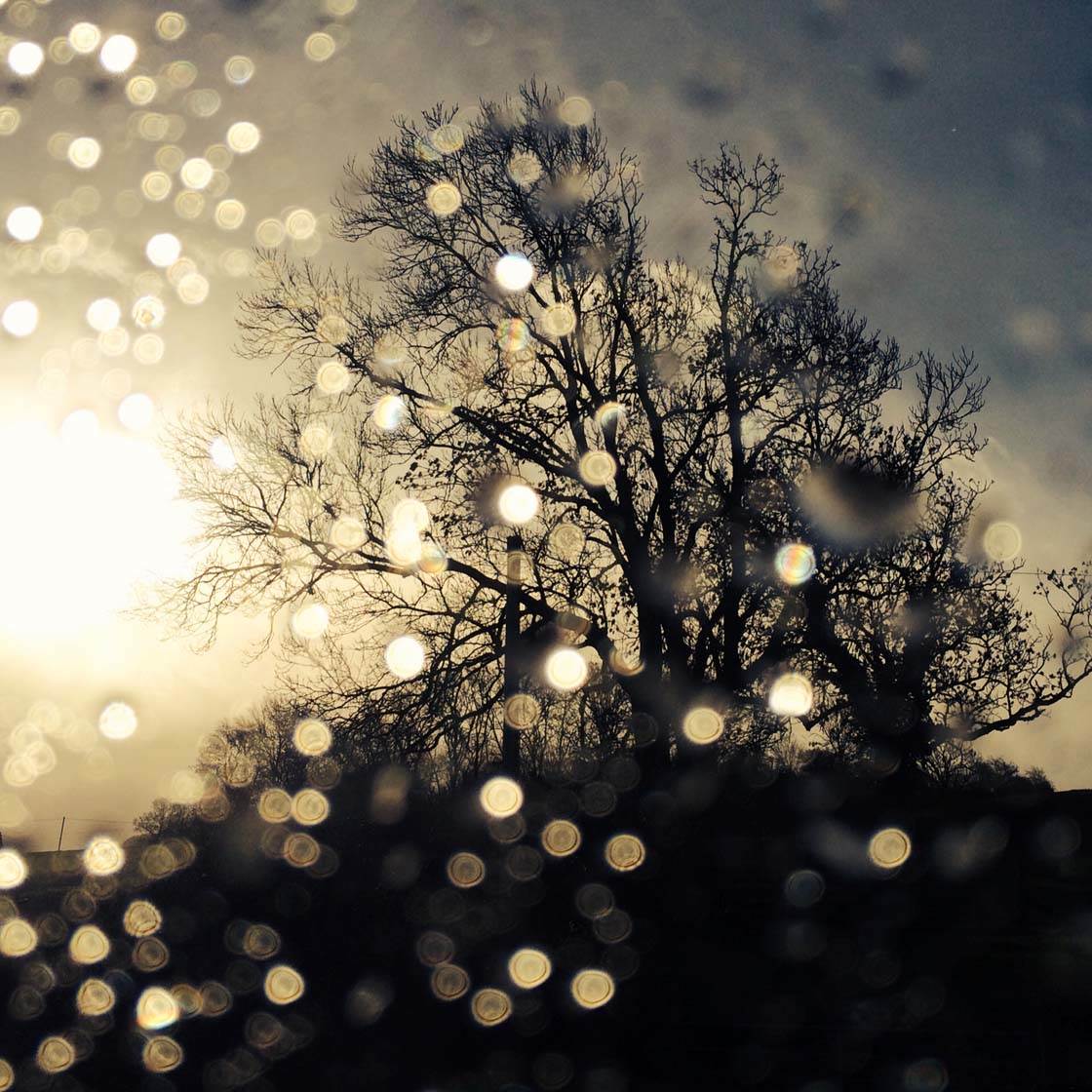
Capturing the sun as it shines through the water droplets will create wonderful sparkles in your photo. This is great for adding a a magical mood to your images.
Water droplets can also be used to obscure part of the scene, creating an air of mystery and intrigue in your photo. In the photo below of the runner on a rainy day, part of what makes the photo interesting is that the water droplets hide her face.
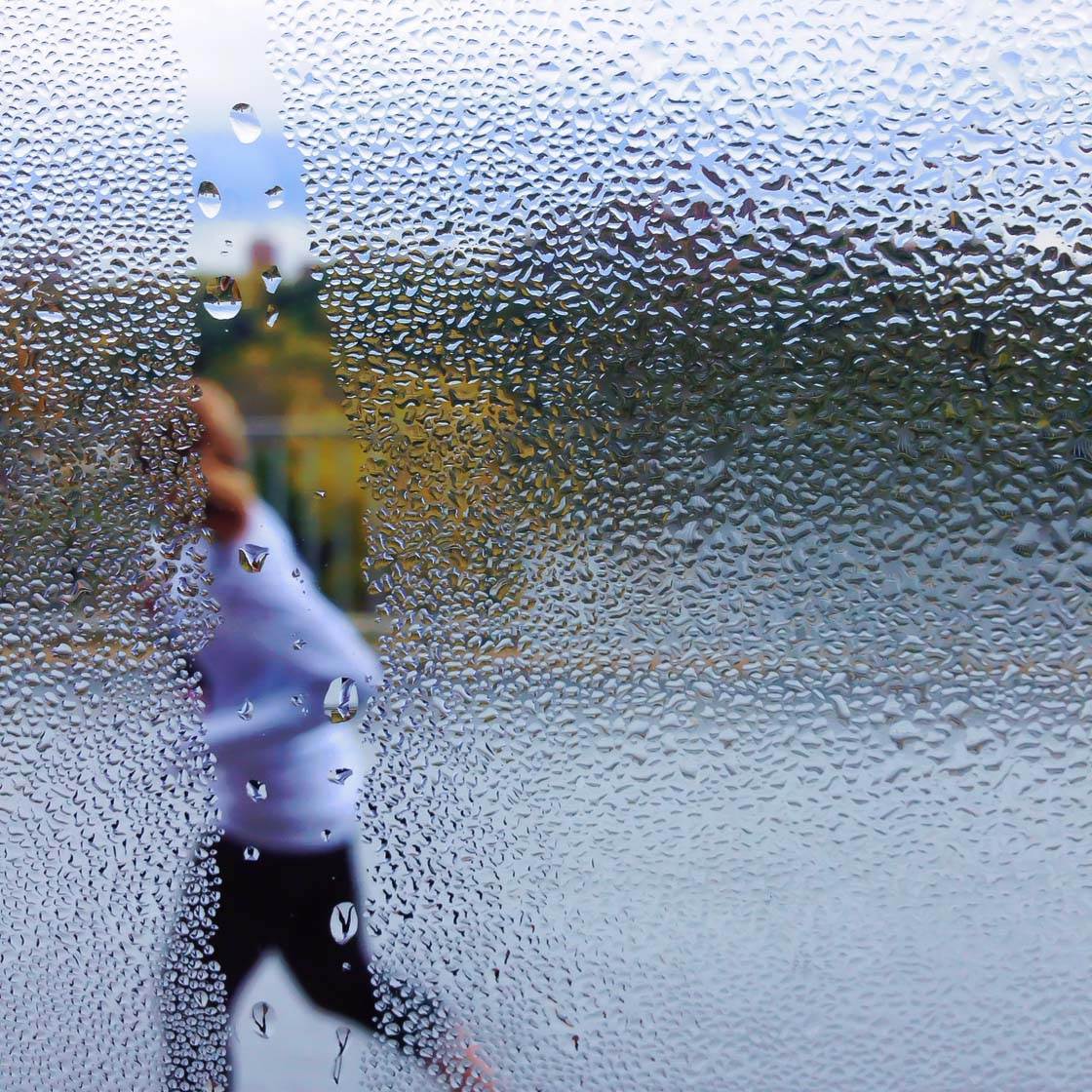
Note, too, that you can see the scene inverted in a couple of the water droplets, like the one over her black tights. The water droplets are refracting her image, making her legs appear upside down in the droplets.
As well as shooting through windows, how about getting even more creative and shooting through eyeglasses as shown in the photo below. I took this shot when I got caught in a rainstorm and had to run back to my car to seek refuge from the deluge.

Note that you can see the water droplets on my glasses in the foreground, as well as the water droplets on the car window just beyond that. This makes it a double shoot-through!
On a rainy day, look out for car windows, or windows in your home that you can shoot through. Such a simple thing gives you the opportunity to create truly unique photos.
2. Frosted Glass
In addition to shooting through clear glass, frosted or textured glass can also make for very interesting photos. This kind of glass allows you to create images that are halfway between silhouettes and a regular photo.
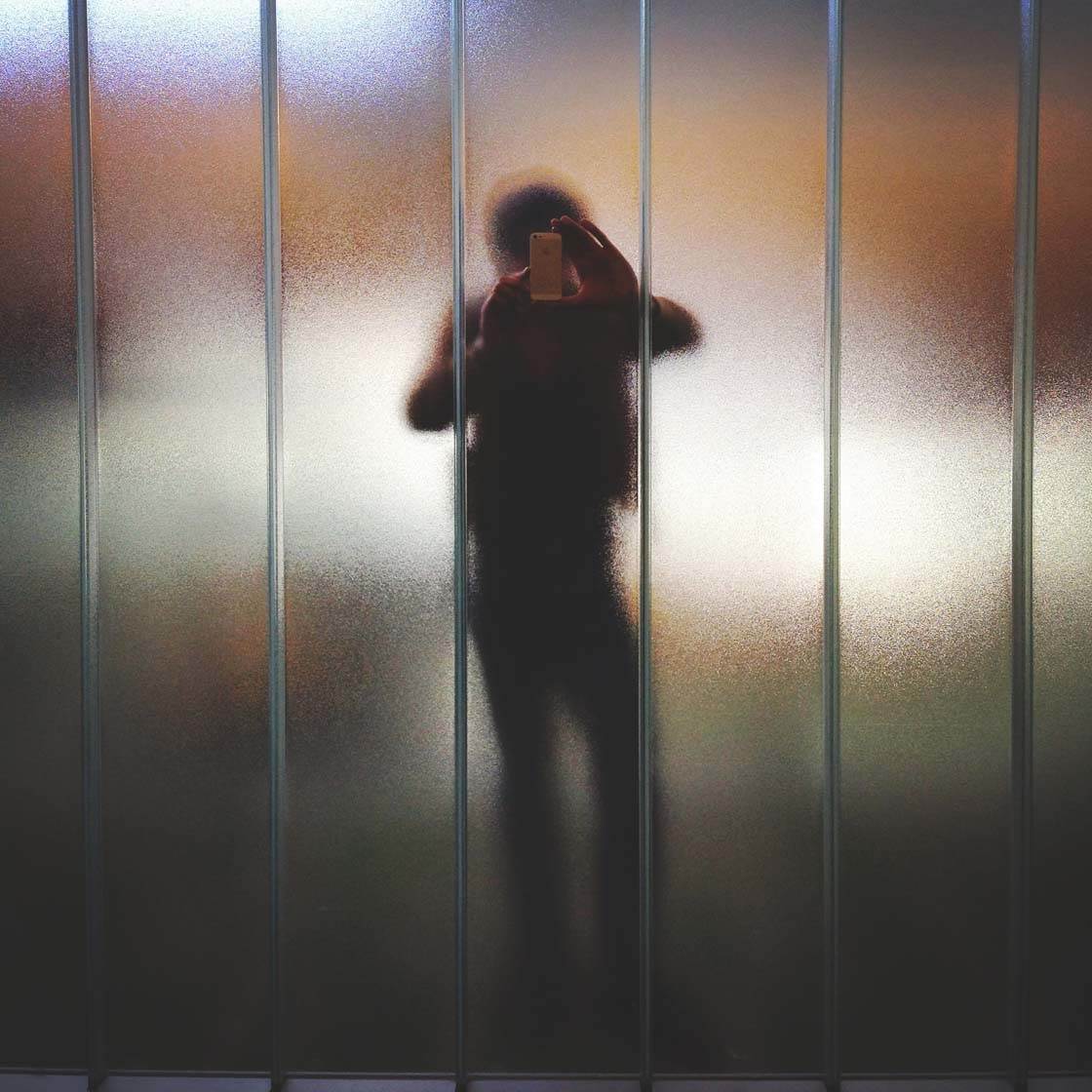
The photo below shows my friend, Corbin, leaning his head against the textured glass. This makes his forehead and glasses sharper than the rest of his body.
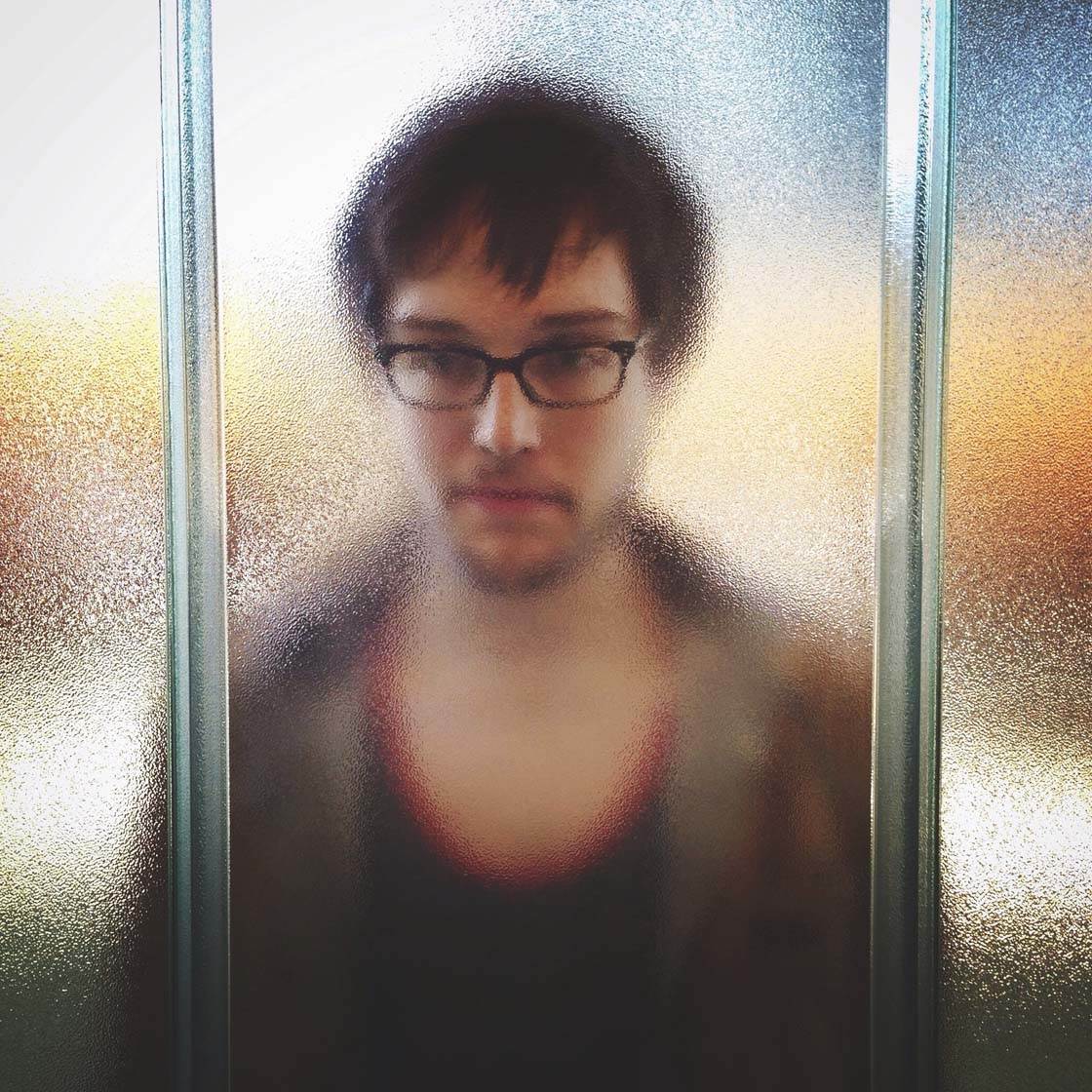
The texture in the glass helps to blur the image. The further away the subject is from the glass, the blurrier it will appear. Use this to your advantage, varying the distance of your subject until you achieve an interesting effect.
Sometimes glass is both frosted and textured, like the stairs at the Apple Store in New York City that I captured in the photo below.
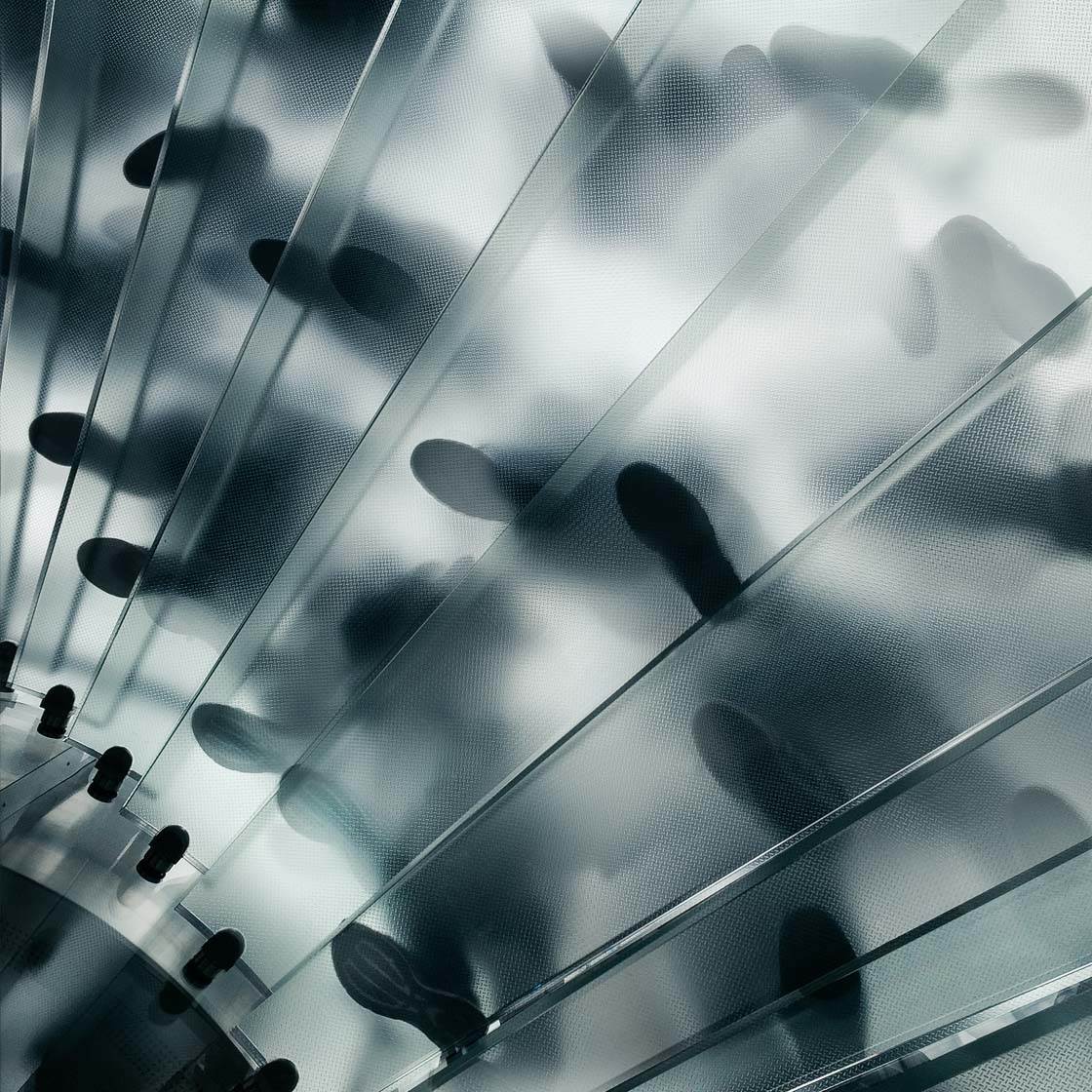
Because of the frosting, you can’t really make out the people’s bodies – you just see the silhouetted shape of their shoes. This makes for an interesting photo as it isolates the shapes and textures of each person’s shoe.
You can also look for glass that’s partially frosted, which means that your subject will be partially hidden from view. In the photo below you can see the man partially through the clear parts of the glass, and his shadow is more prominent in the frosted stripes.
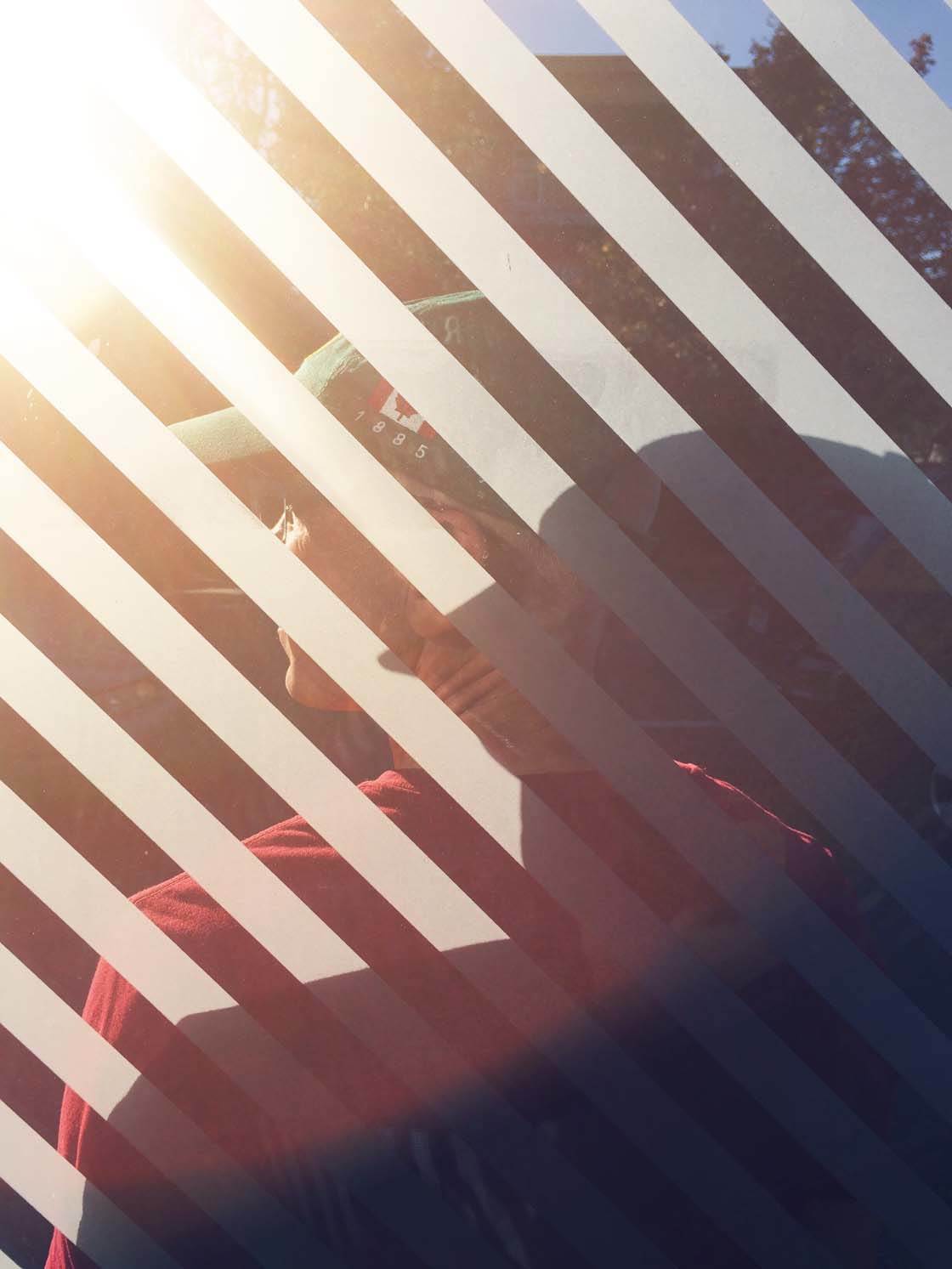
Frosted glass is a great way to create cool images. Make sure you play around with how much of the subject is clear and how much is obscured by experimenting with the distance between your subject and the glass.
3. Ice & Snow
A variation of frosted glass is shooting through ice. In the photo below, the ice on the car windshield is so thick that you can’t quite tell what’s going on, but it’s still a beautiful abstract image with fantastic texture.
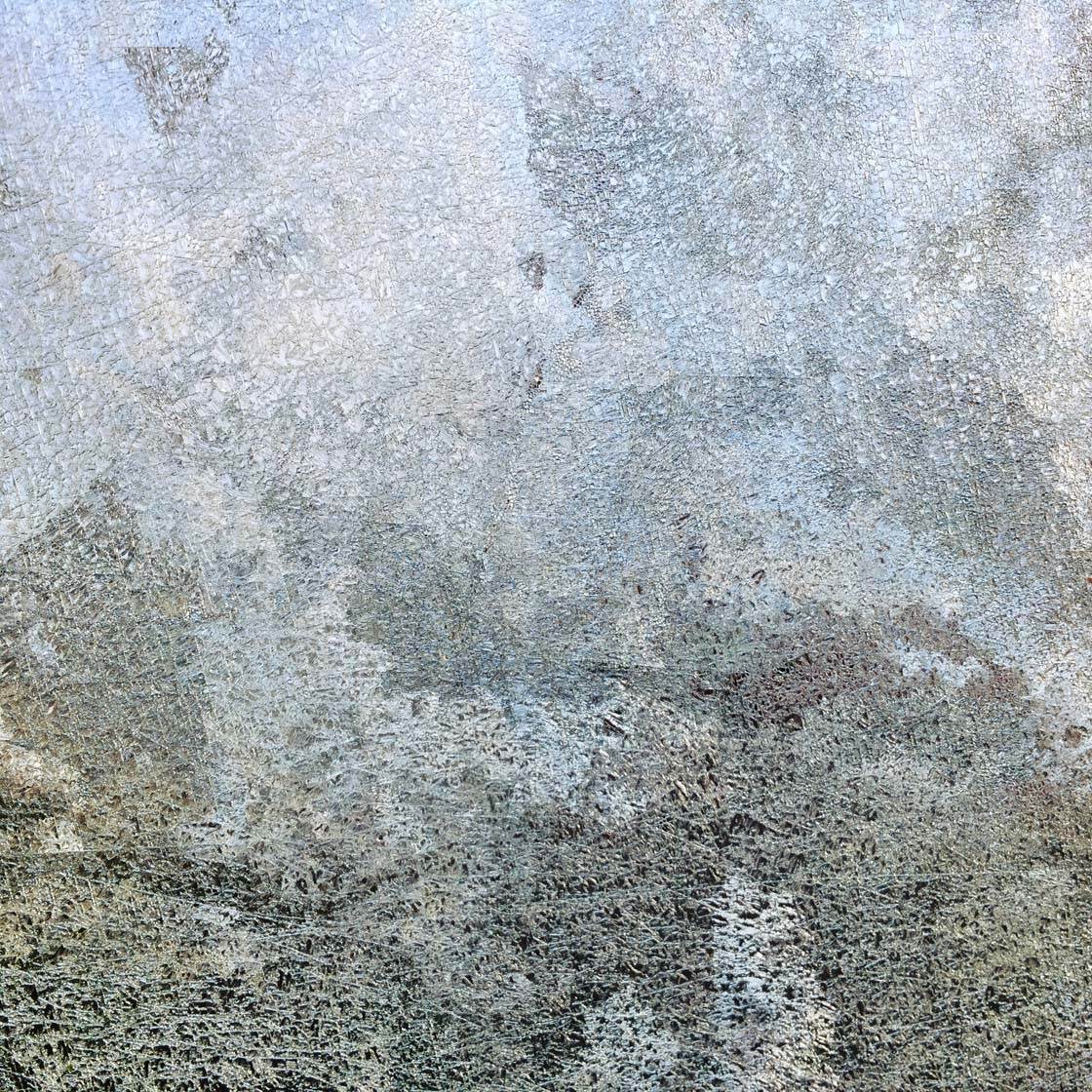
Snow can also make for a great texture to shoot through. The photo below was shot from inside my car on a snowy day.
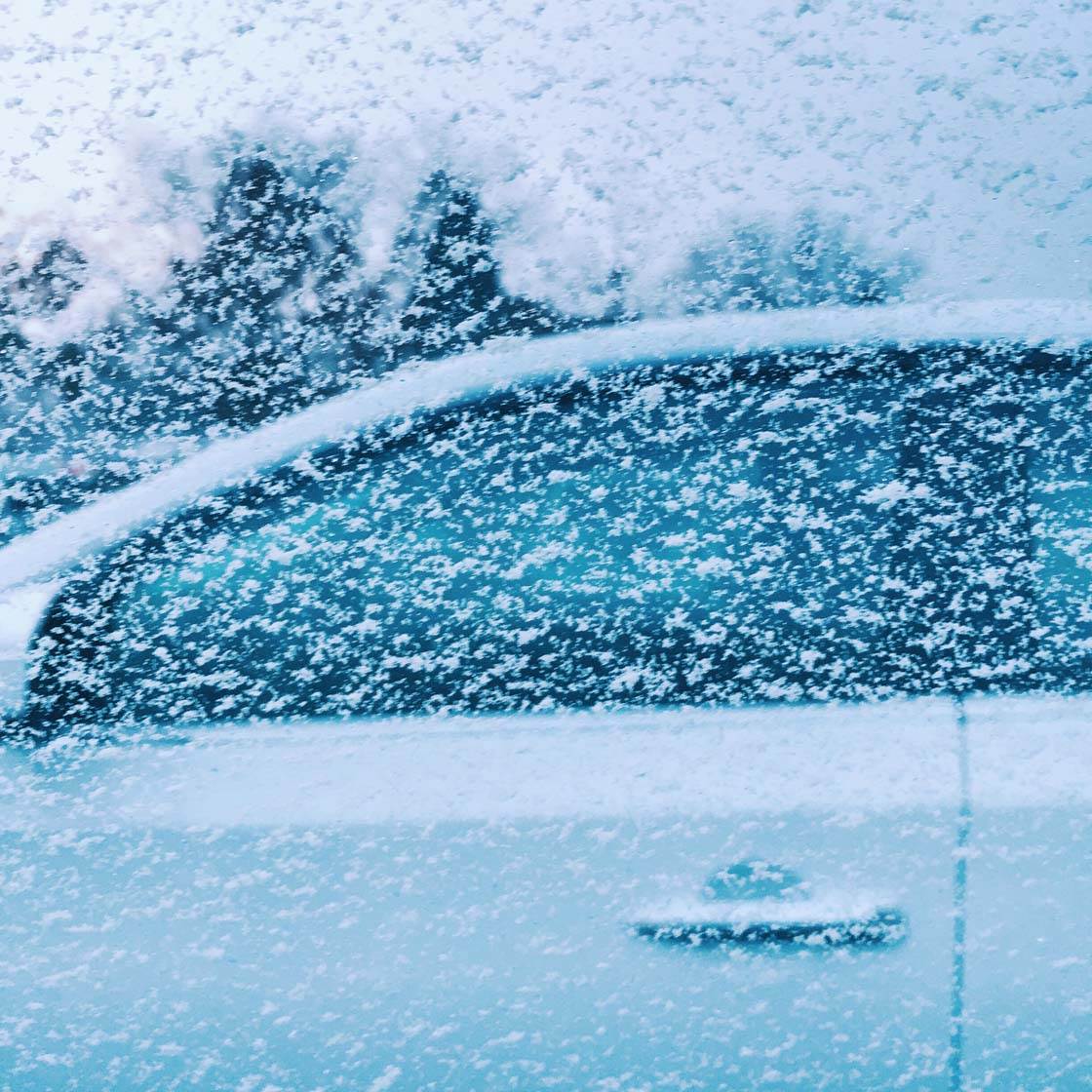
You can see both the snow on the window of the car that I’m in, as well as the snow on the window of the car next to me. This double snow effect adds an extra layer of visual interest to the image.
Shooting through ice or snow can be tricky because it’s often so cold that it’s hard to think creatively. So wrap up warm and take the time to look for opportunities to experiment with icy or snowy glass. The photographic rewards will be worth it.
4. Crystal Ball
Shooting through a crystal ball is a great way to bring a new perspective to a familiar scene. By introducing a crystal ball into your photos, you’ll immediately bring a special quality to the images because of the way that the ball refracts the scene.
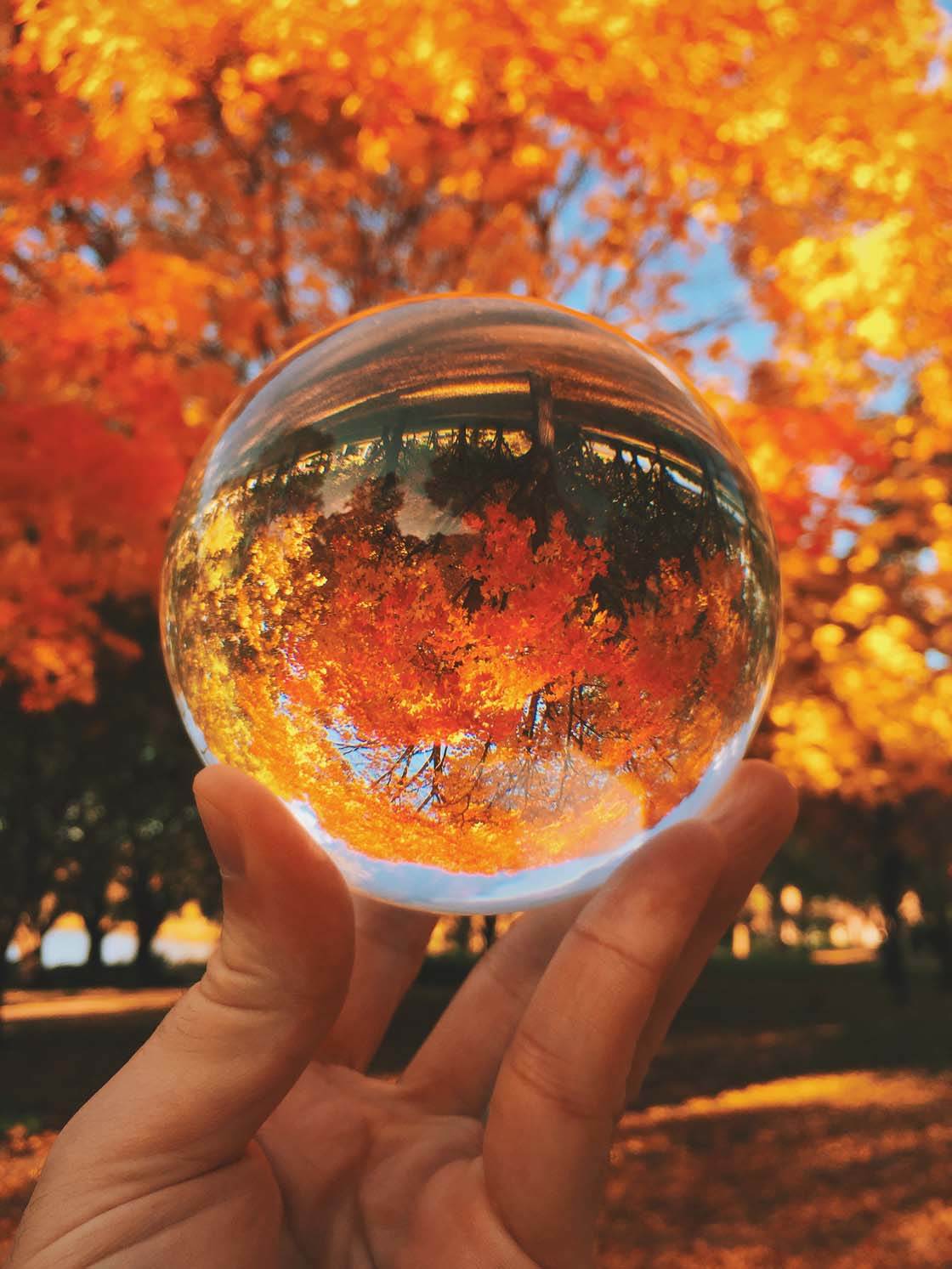
Everything will appear upside down inside your ball, which makes the viewer look at things anew.
An added benefit of shooting through a crystal ball is that you’ll get a shallow depth of field, as long as you hold the ball fairly close to the camera. This helps to emphasize the ball and its magic by softening the background slightly.
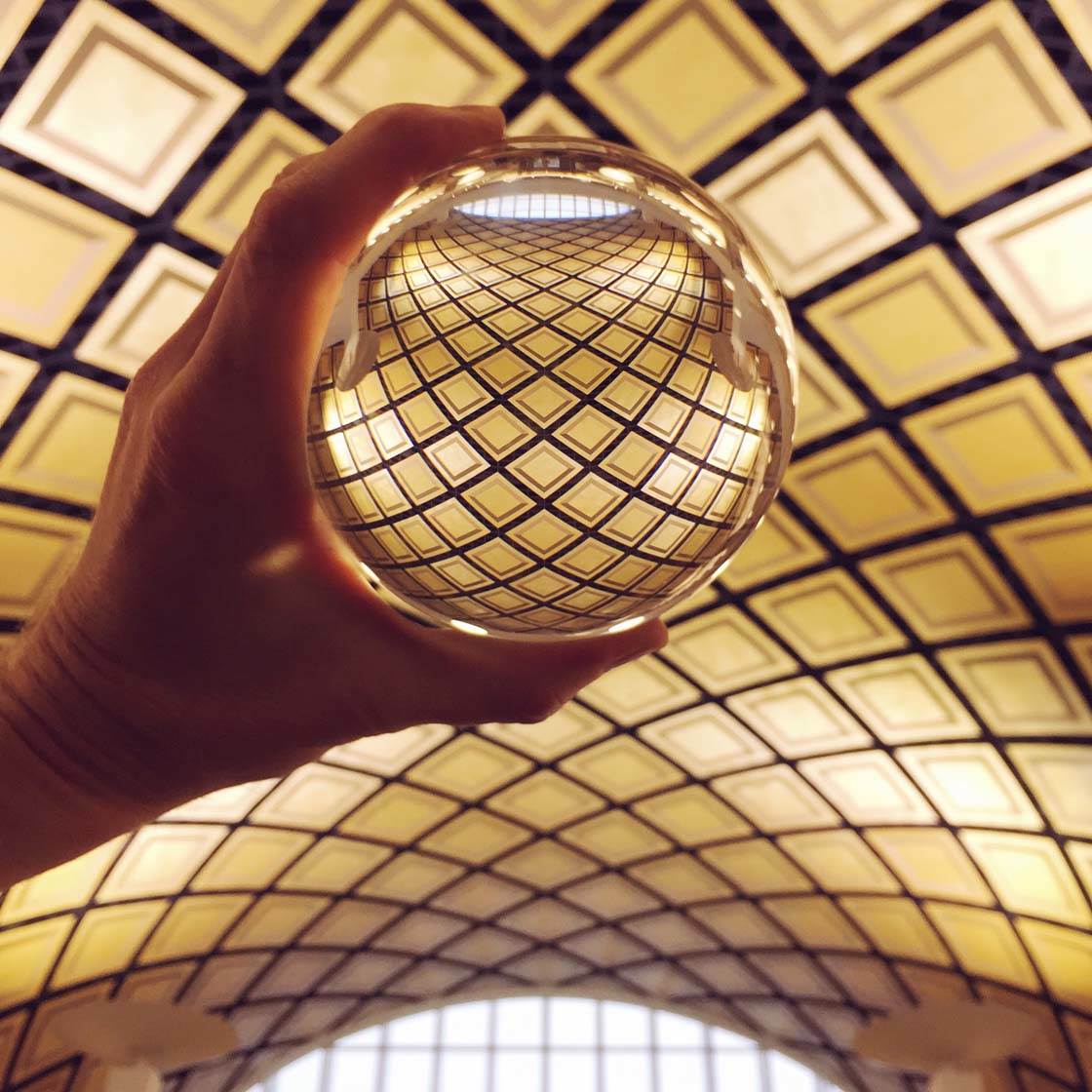
Just make sure you tap on the ball on your iPhone’s screen to set focus on that part of the scene. Once you’ve done this, the scene in the background should appear blurred.
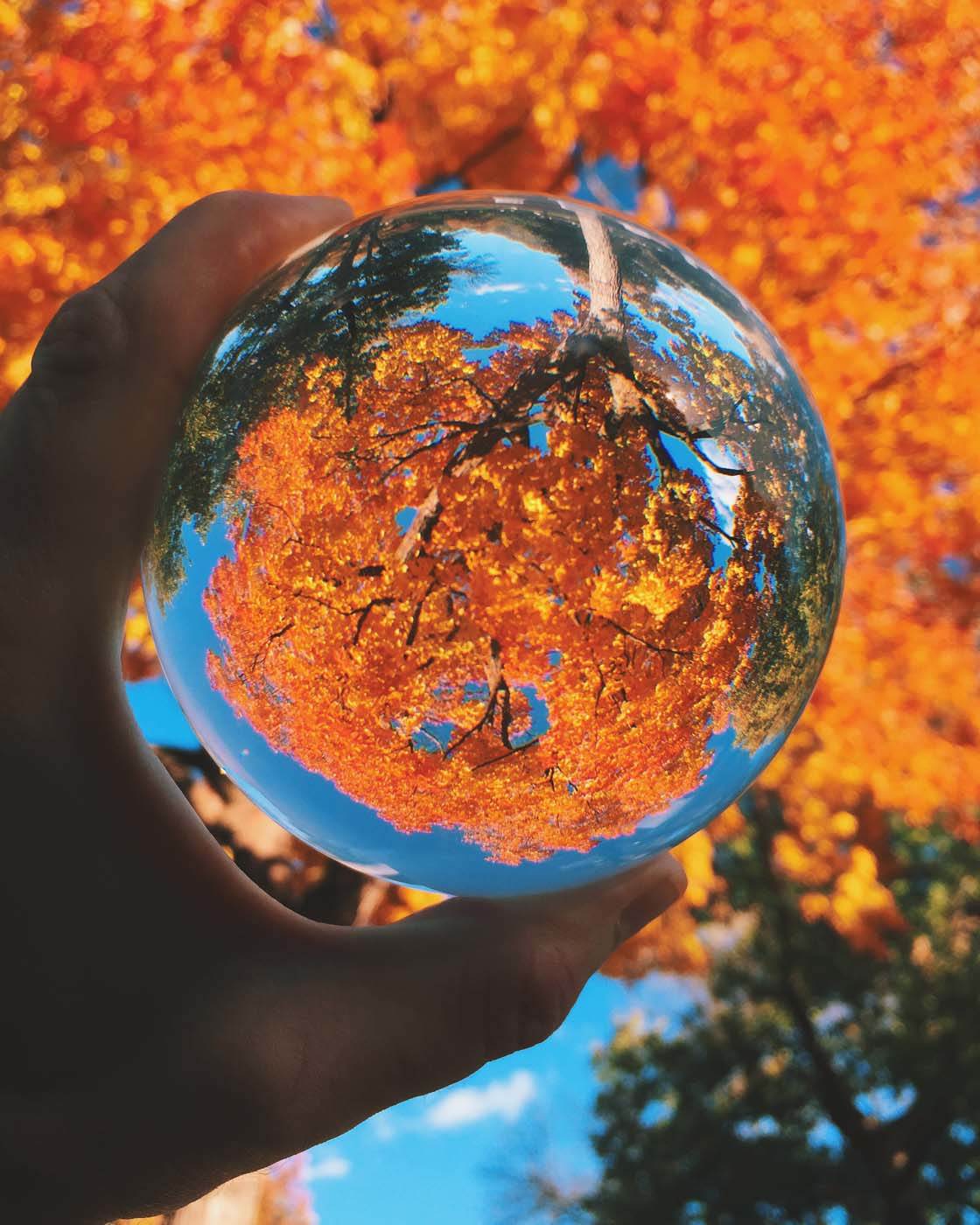
Crystal balls can be a little expensive, but they’re sure to spark creative thoughts any time you put them in front of your iPhone.
5. Prisms
Many children’s stores sell inexpensive prisms which you can use to refract your image in two different ways at once. Prisms are harder to work with than a crystal ball, but they can make for some interesting images.
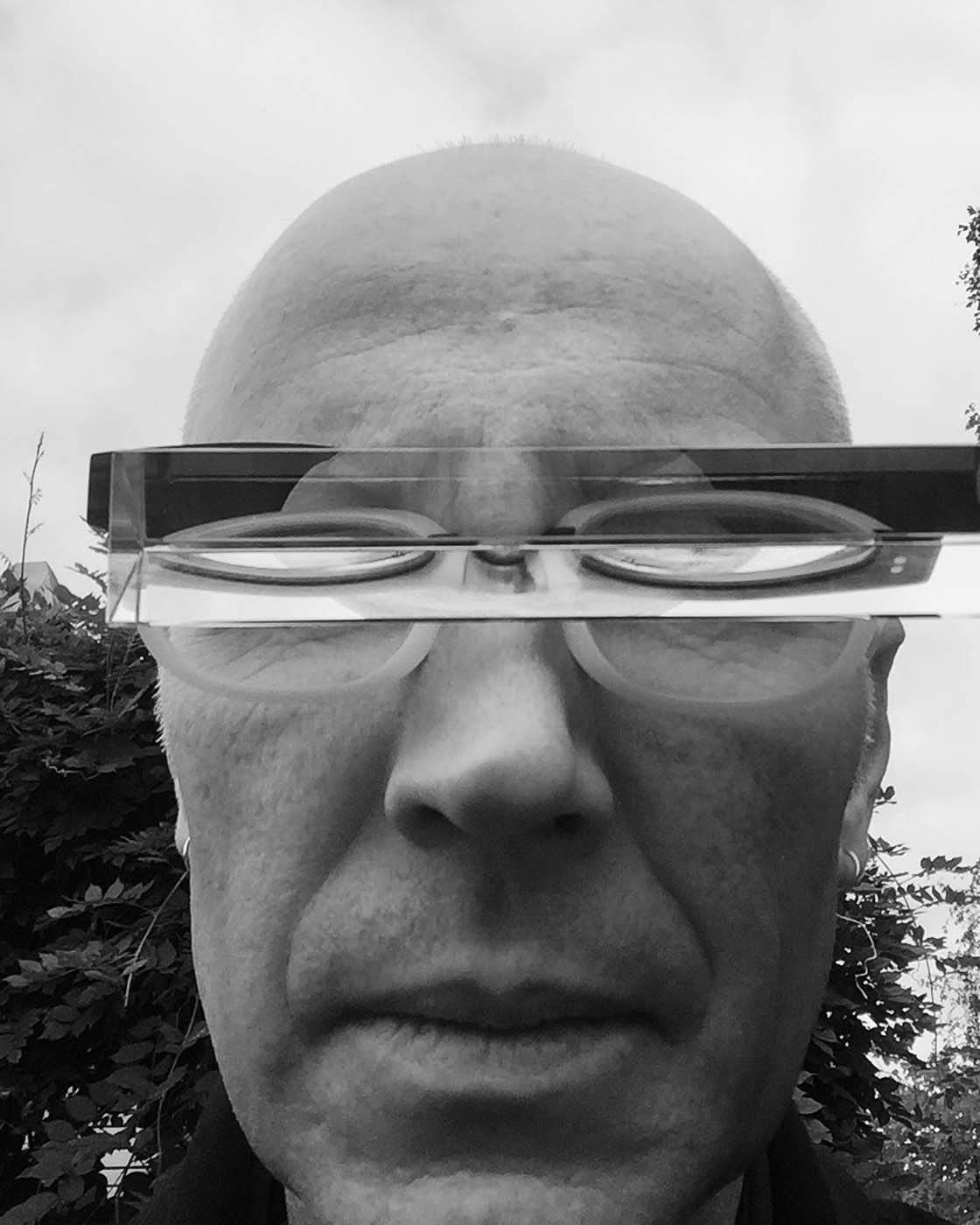
It’s fun to experiment by placing the prism so that it covers part of your lens, as shown in the photo below. I covered the bottom part of the lens with the prism, which made my feet unexpectedly come into frame.
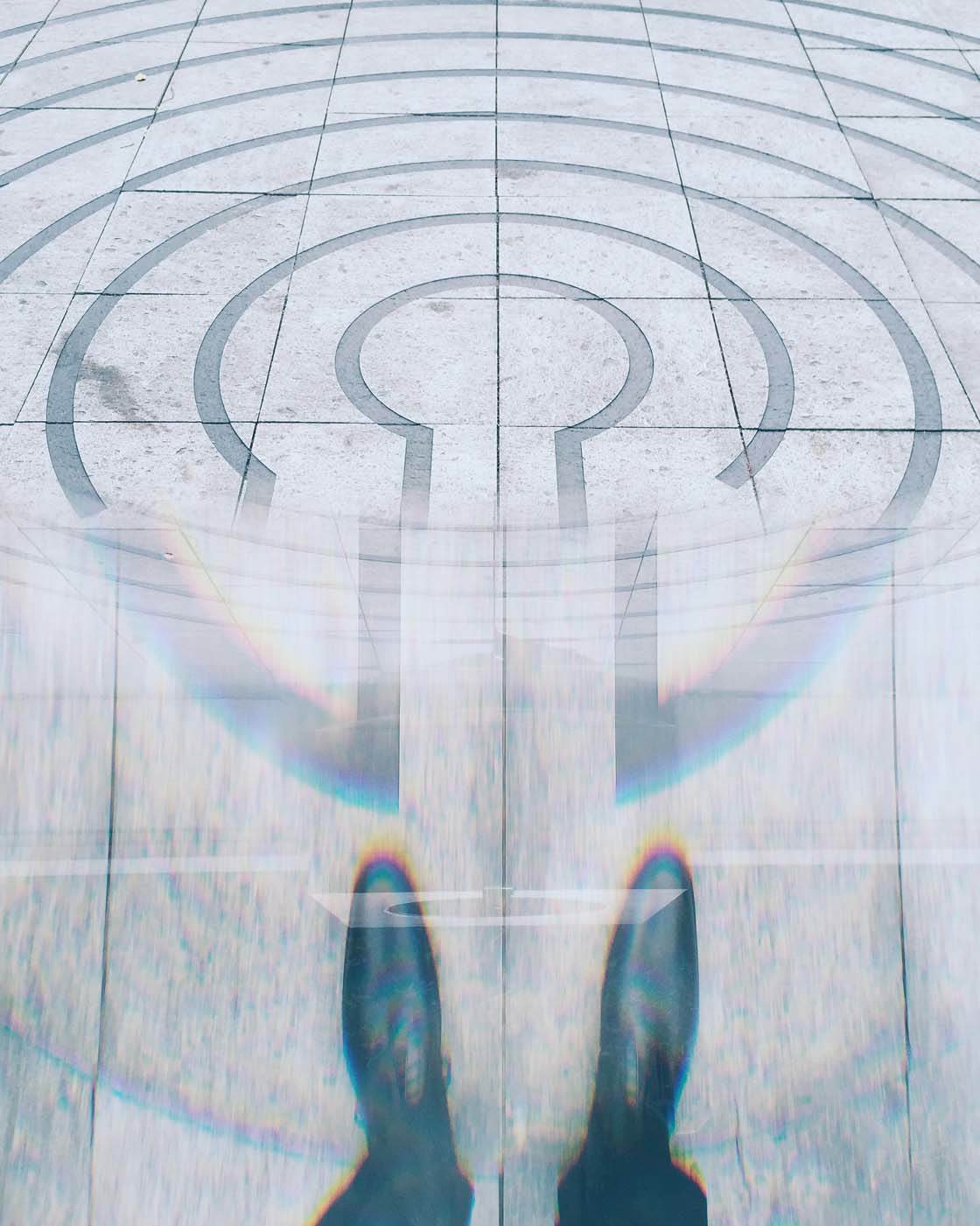
Try shooting in burst mode, and slowly moving the prism around in front of the lens. You can end up with some bizarre and fun effects by experimenting in this way.
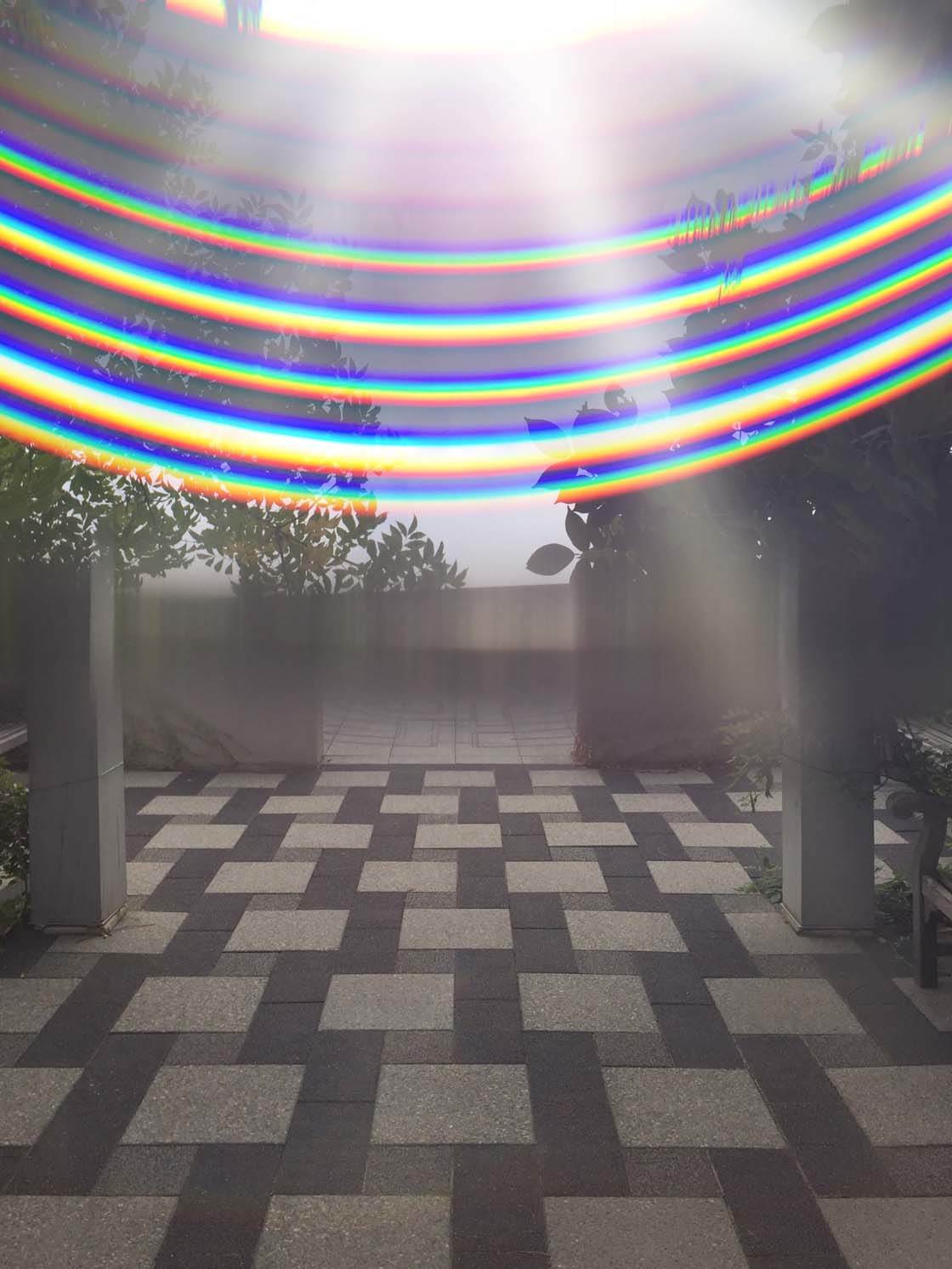
Prisms aren’t for everyone because it’s hard to control what you see and what you don’t see, but if you like experimenting in your photography and creating abstract images, you might enjoy picking up one of these inexpensive objects to shoot through.
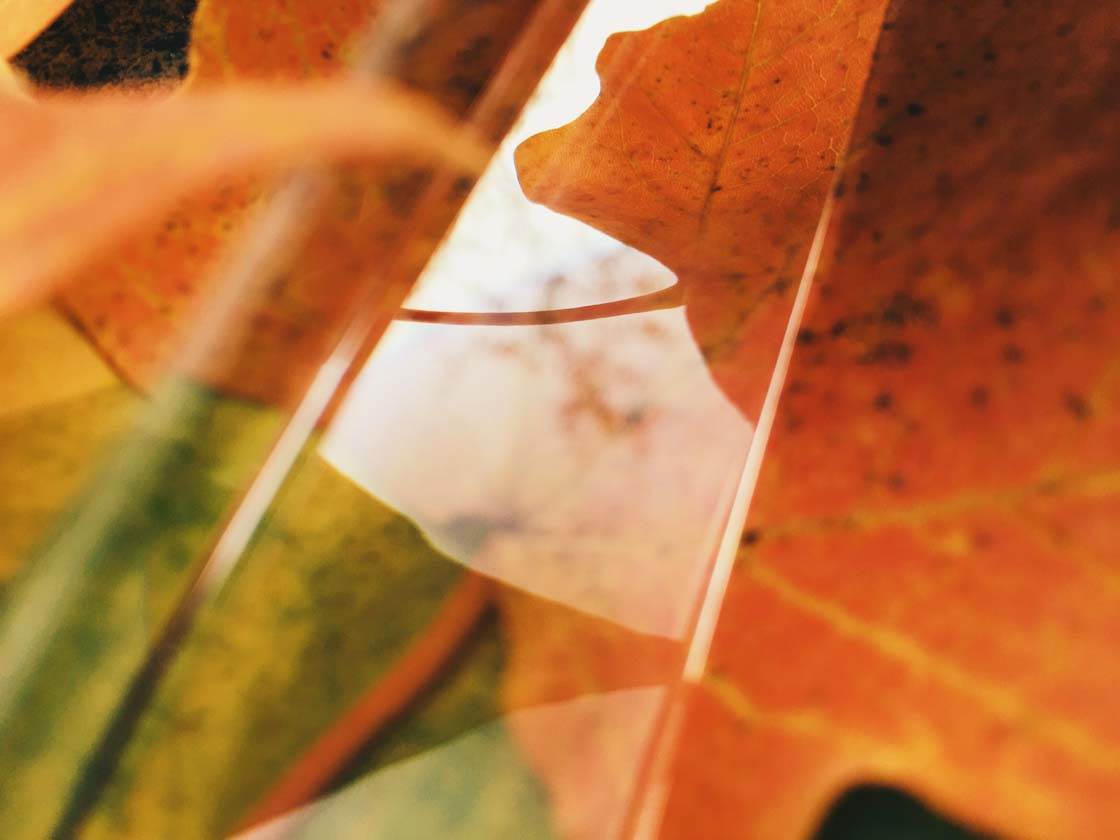
6. Other Transparent Objects
You can also make interesting photos by shooting through transparent objects that have a color or other texture in them.
Bottles that contain colored liquids can make stunning subjects for your photos, especially when there’s a light source behind them.
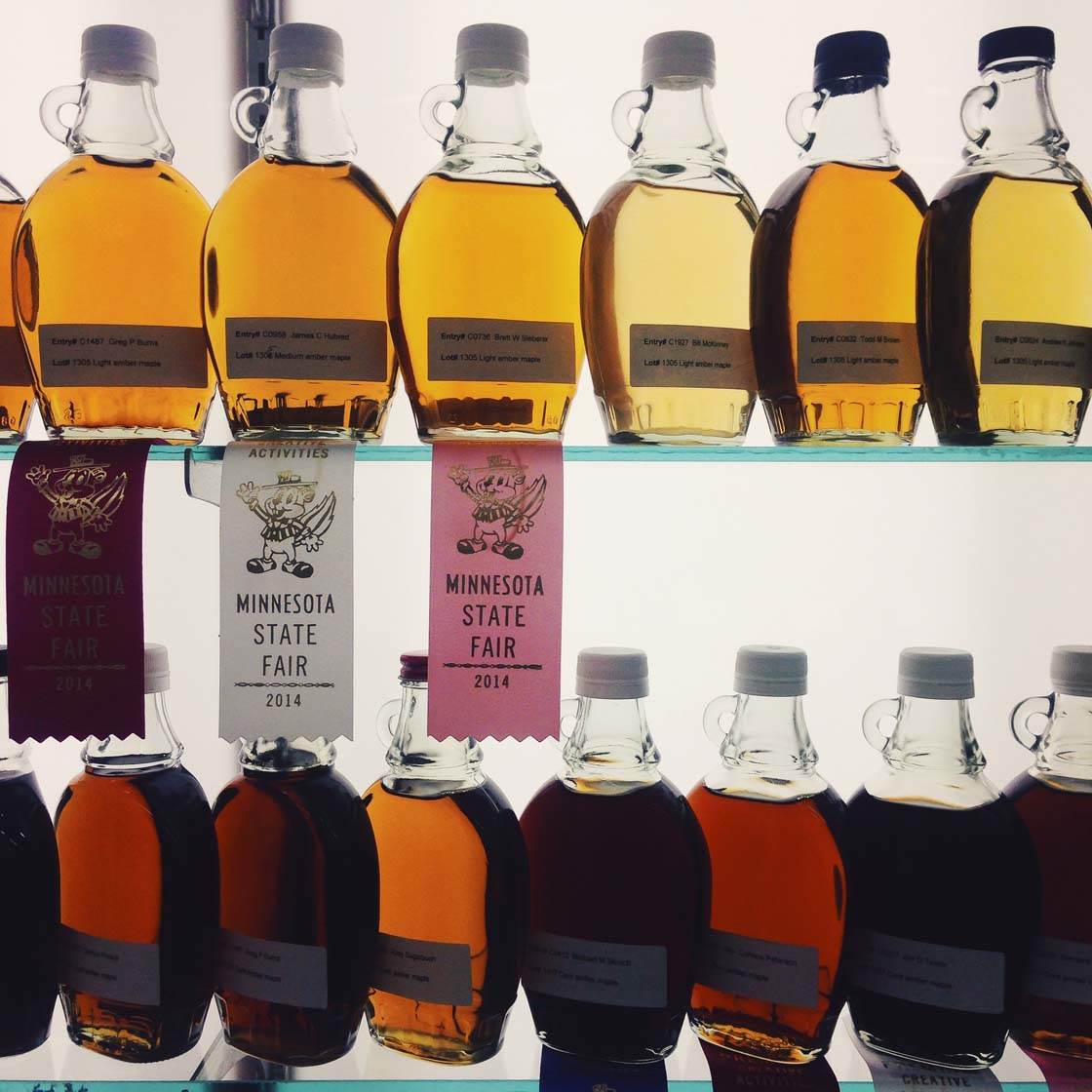
These maple syrup bottles were backlit, allowing us to see the varying colors of syrup through the glass. Without the light behind the bottles, these colors wouldn’t have showed up so well.
In the photo below, the numbers etched onto the glass make a standard photo of a tree much more interesting because of the way the textured glass refracts the light that passes through it.

Part of what makes the photo interesting is the contrast between the regular numbers and the organic tree shape behind the glass.
Lastly, how about looking out for some colored glass that might add a layer of strangeness to your photo?
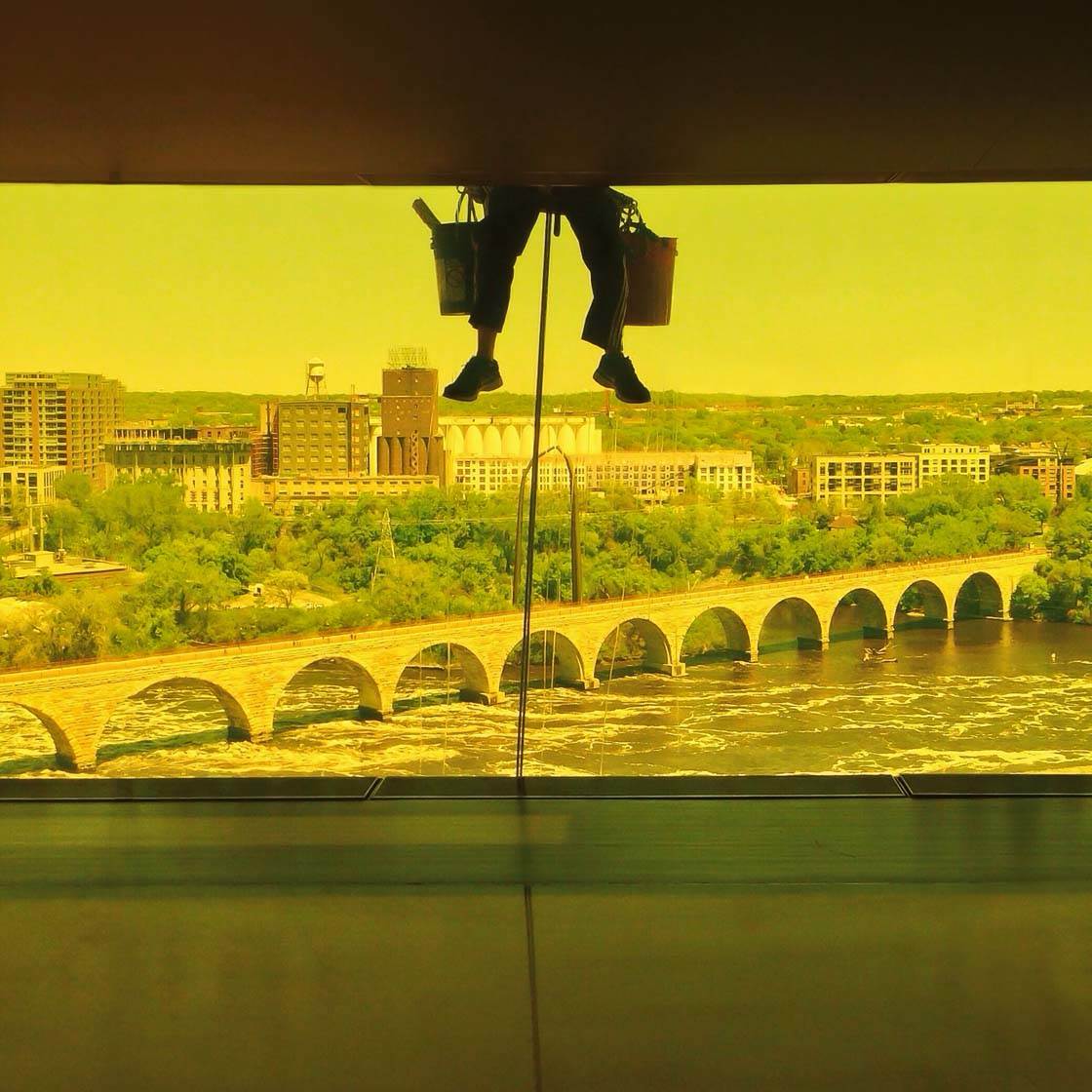
In the photo above, I captured the legs of a window washer dangling down. Because the glass is an unusual amber color, it makes the image somewhat bizarre.
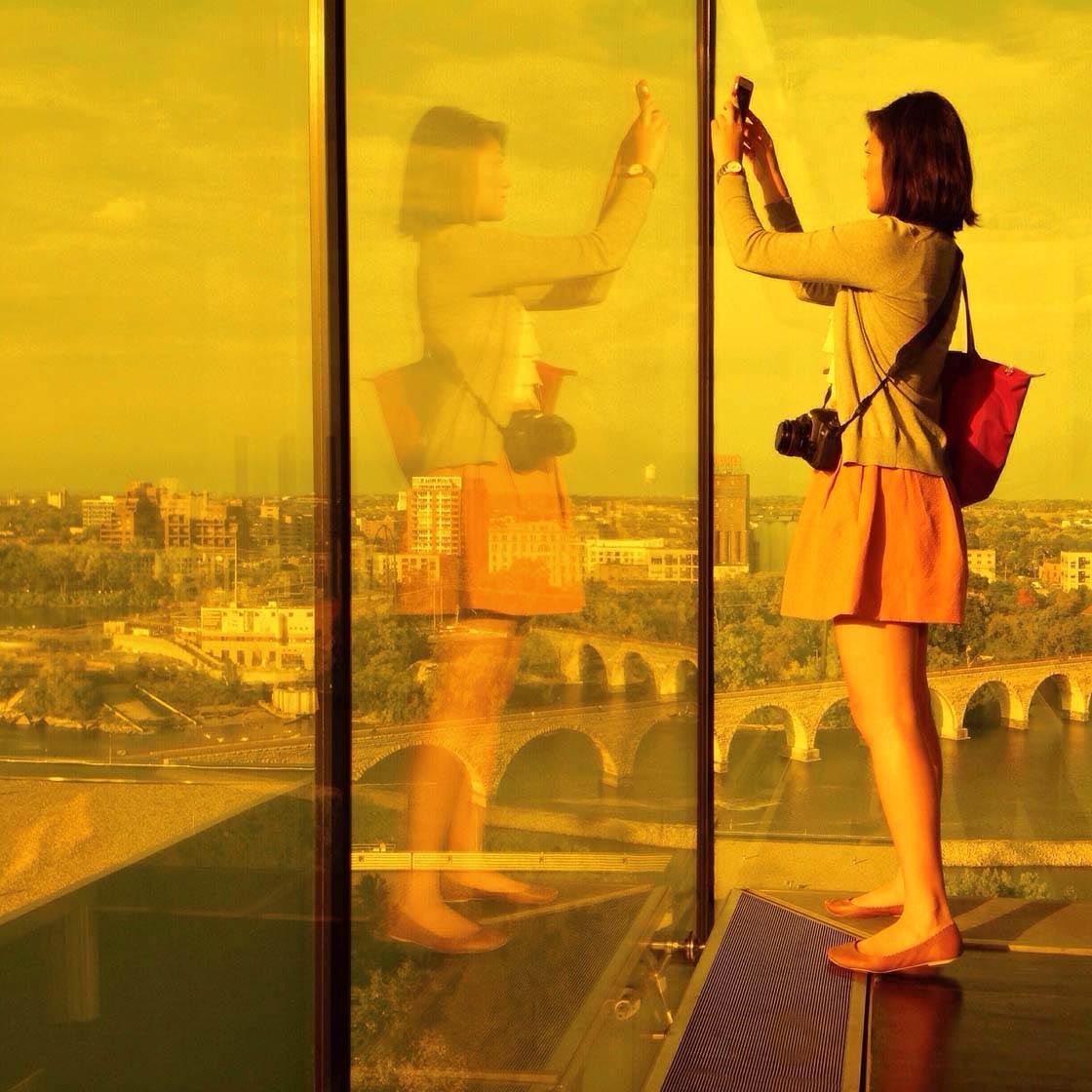
Colored glass can be found in many places, and using it to create some fun, colorful images is bound to get your iPhone photos noticed.
7. Windows & Door Frames
Framing an image through a window or doorframe is a classic way to add depth and dimension to a photo. Looking through a framing device gives the viewer context to the location, and it can help tell a story about what’s happening.
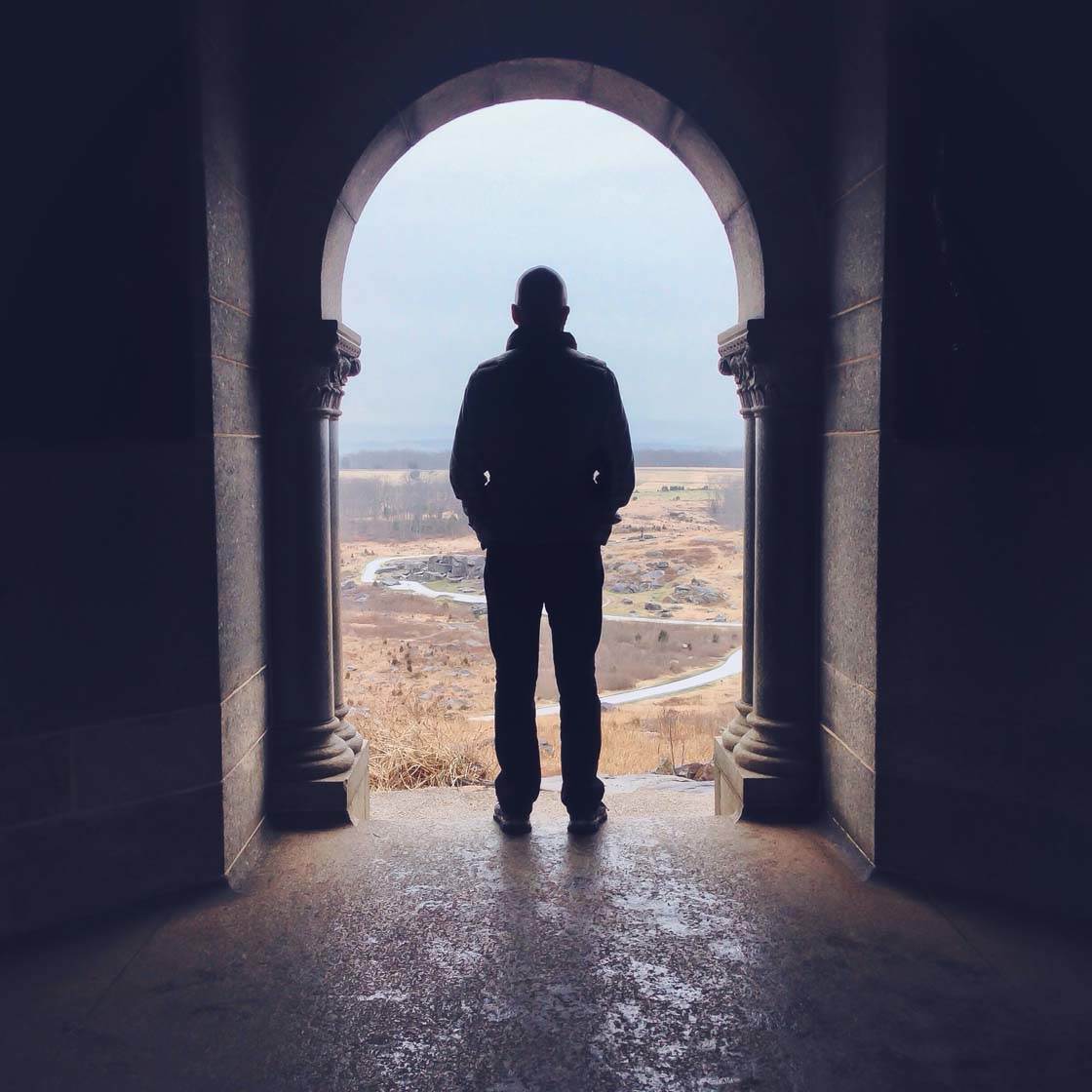
In the photo below, imagine what it would look like if we weren’t looking through the opening of this tent. It would still be a nice shot of a lake, but the framing of the tent’s door tells us a lot more about what’s happening, and where we’re at.

Similarly, the next photo shows a dirt road up in the mountains. But because we can see a fair amount of the vehicle in the photo, it gives us very different information than if we were looking through the window of a luxury car.
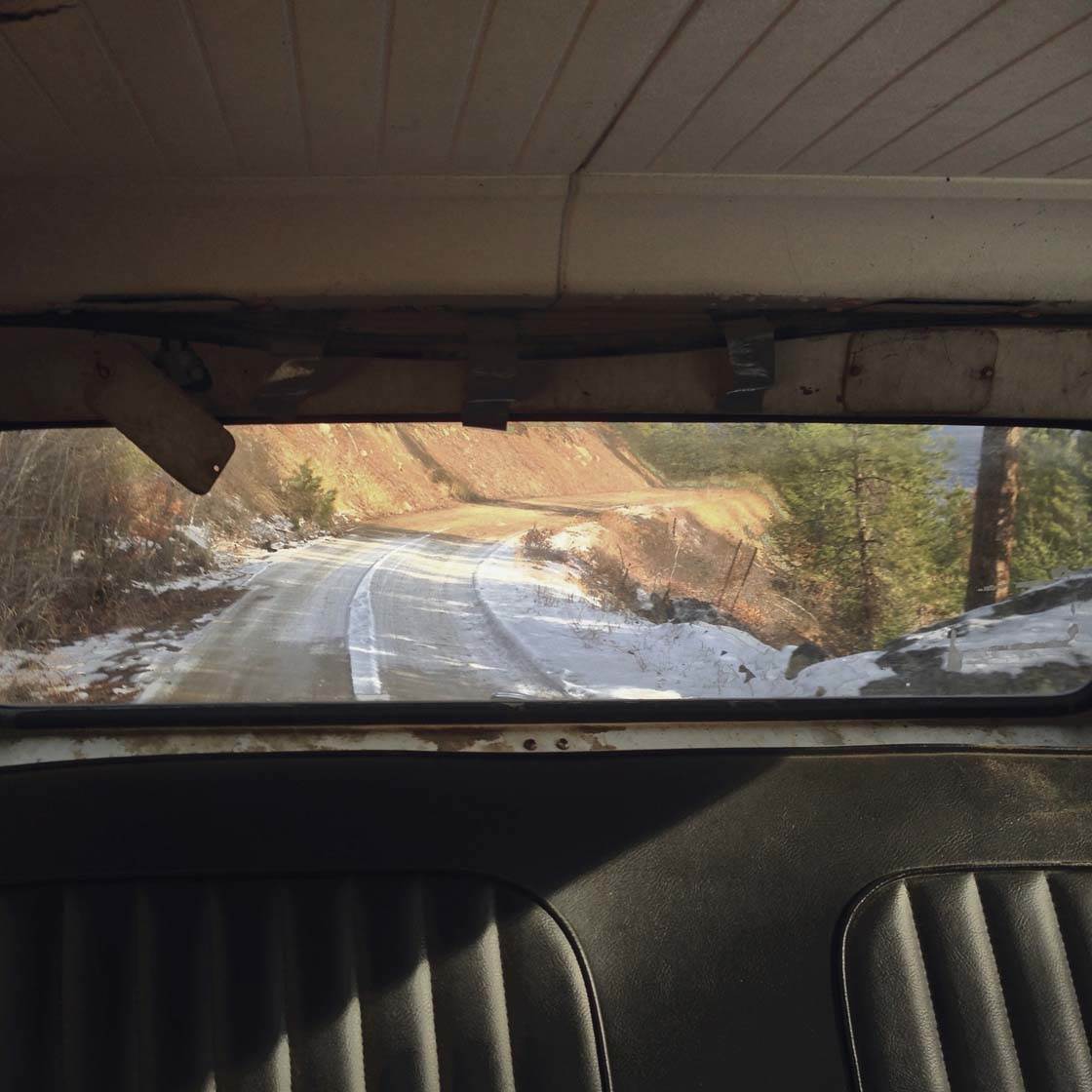
By shooting through the car window and including part of the car’s interior in the photo, it gives a lot of context to the image. It tells the viewer that I was in a very rugged area, in an old, ramshackle vehicle.
Simply shooting through a window or doorframe can take a very simple scene and give it visual tension. In the photo below, I was shooting up through a round skylight, and a bit of cloud was just making its way into the scene.
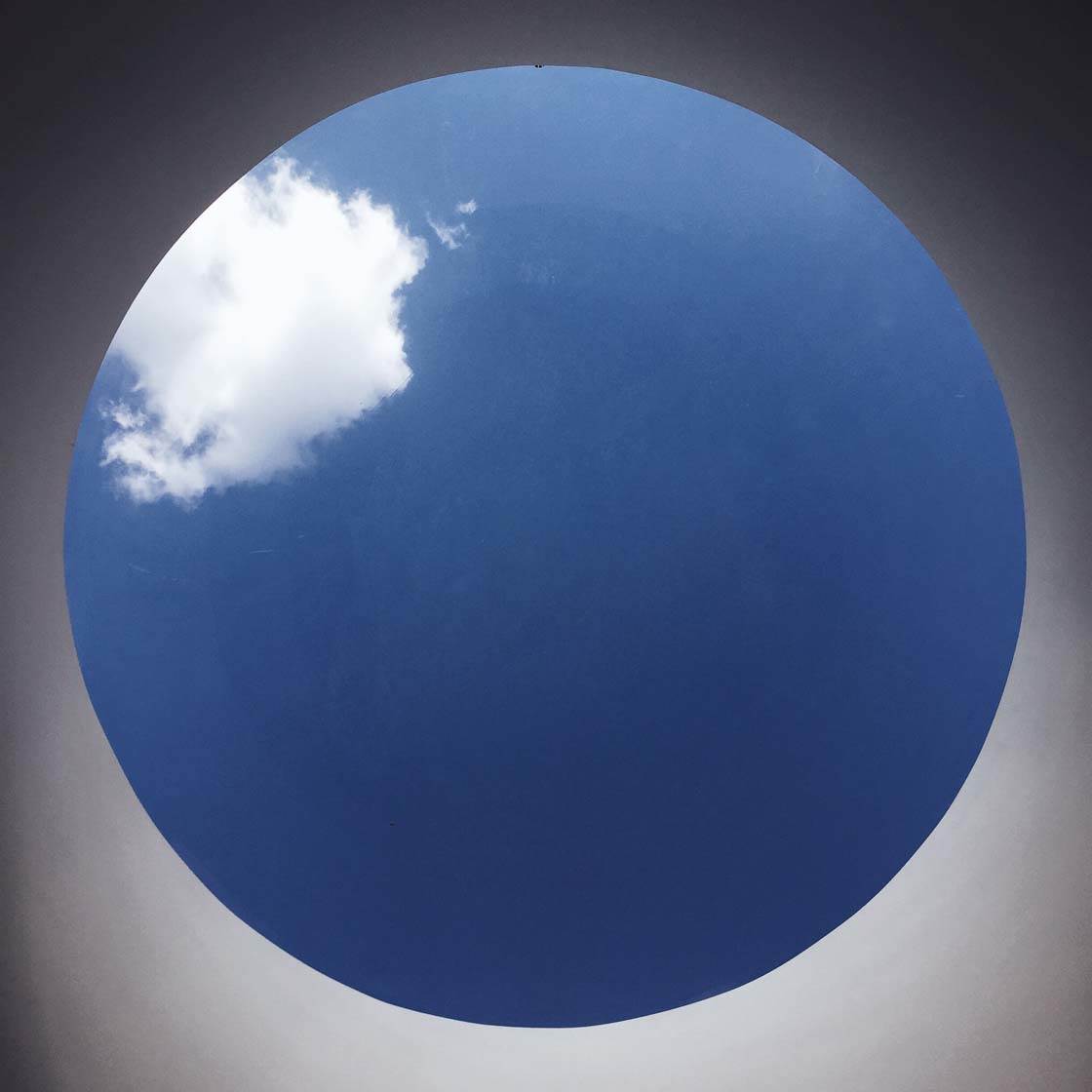
I think this photo is interesting because of the contrast between the perfectly round, man-made skylight, and the organic shape of the puffy cloud that can be seen through the window.
Look around you right now, and notice how different things look when they’re framed by a doorway or a window.
Using this method allows you to decide which parts of a scene to omit by simply framing them out of the shot. This in turn will bring emphasis to your main subject.
8. Trees & Grasses
Shooting through trees, leaves and grasses is another easy way to make your photos more interesting. In addition to creating depth in your photos, it also helps frame your subject in a pleasing way.
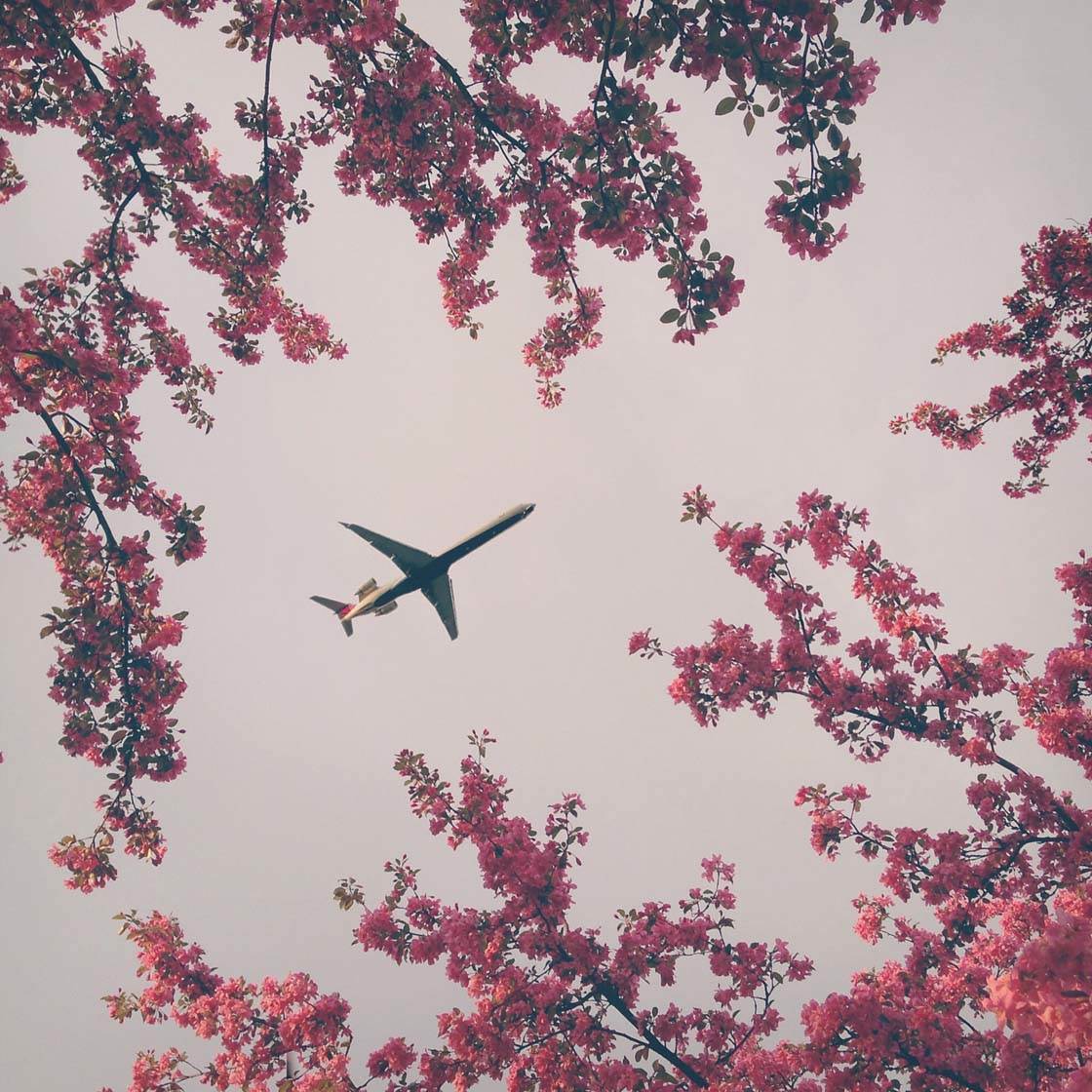
When capturing scenes like this, think carefully about how you expose the image. Do you want to capture color and detail in the branches as shown above? Or would you rather capture them as dark silhouettes like the photo below?
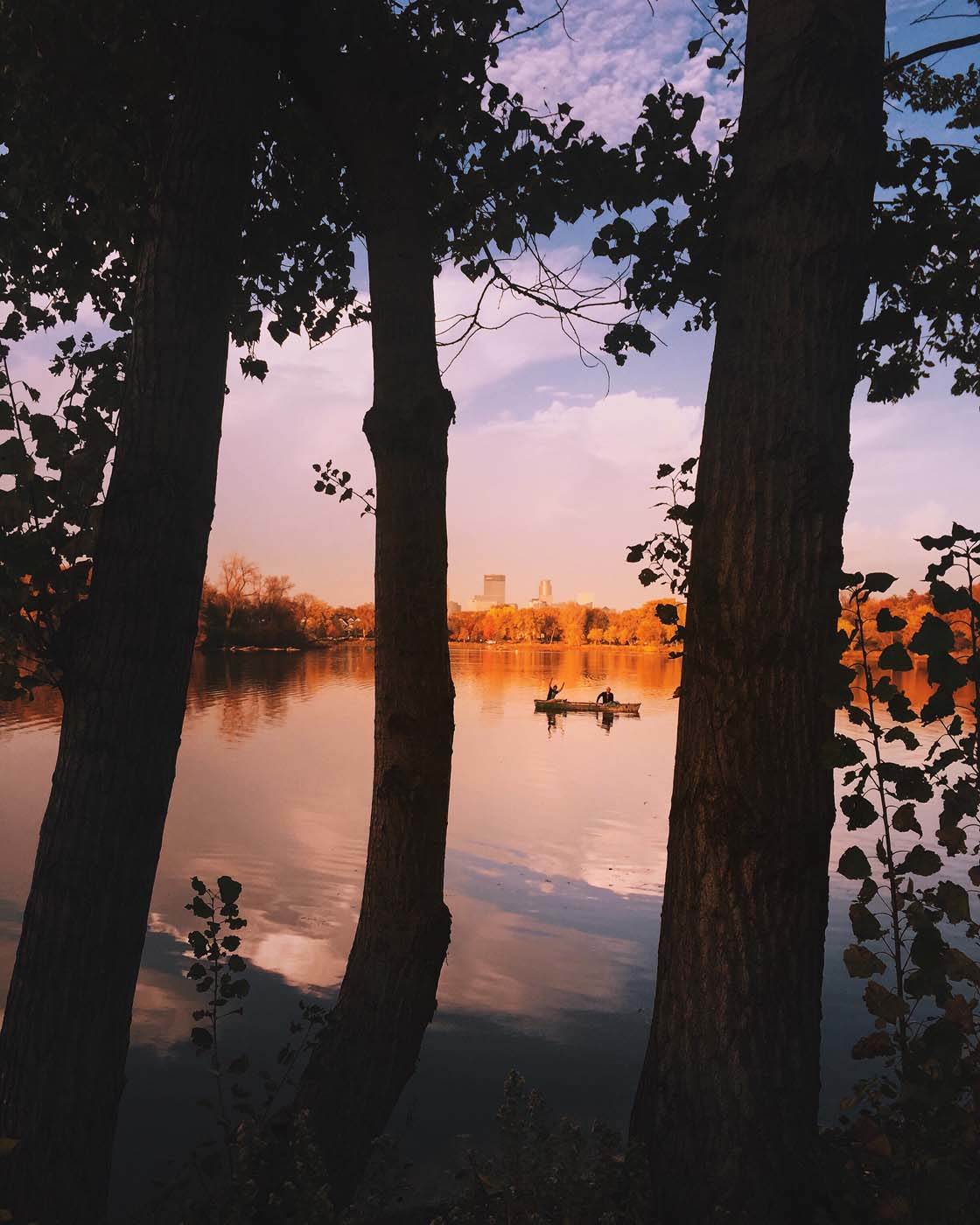
If you want to place focus on the scene in the background, it’s often helpful if the foreground branches are dark. This allows you to capture the framing objects as simple shapes, helping to draw your eye toward the main subject in the distance.
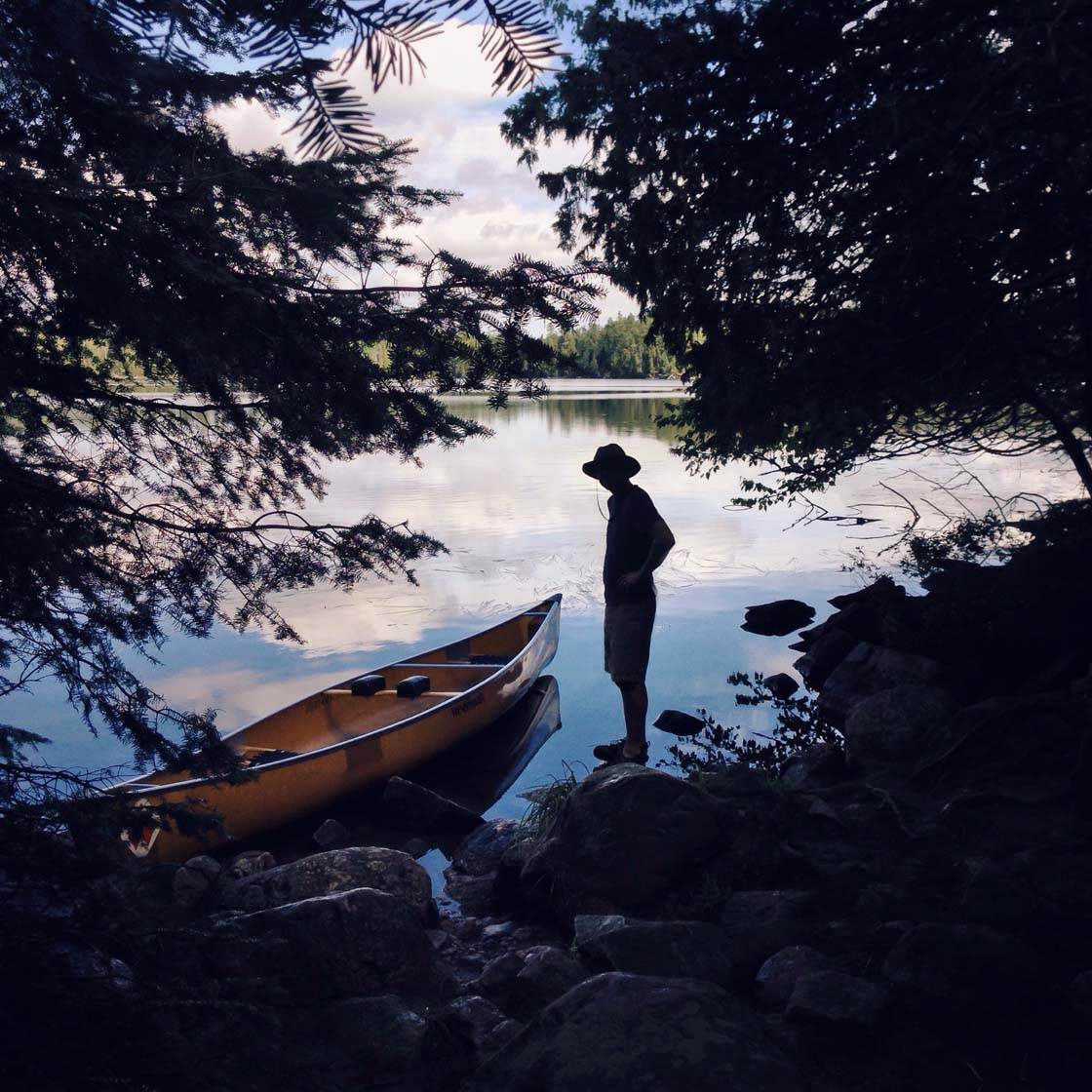
To adjust the exposure of the image, simply swipe up or down on the screen after tapping to set focus. To create a silhouette you’ll need to ensure that the background is fairly bright.
Sometimes it can be beautiful to have the object you’re shooting through appear very bright. This works particular well when shooting through backlit leaves as it allows you to see all the variations in color and brightness.
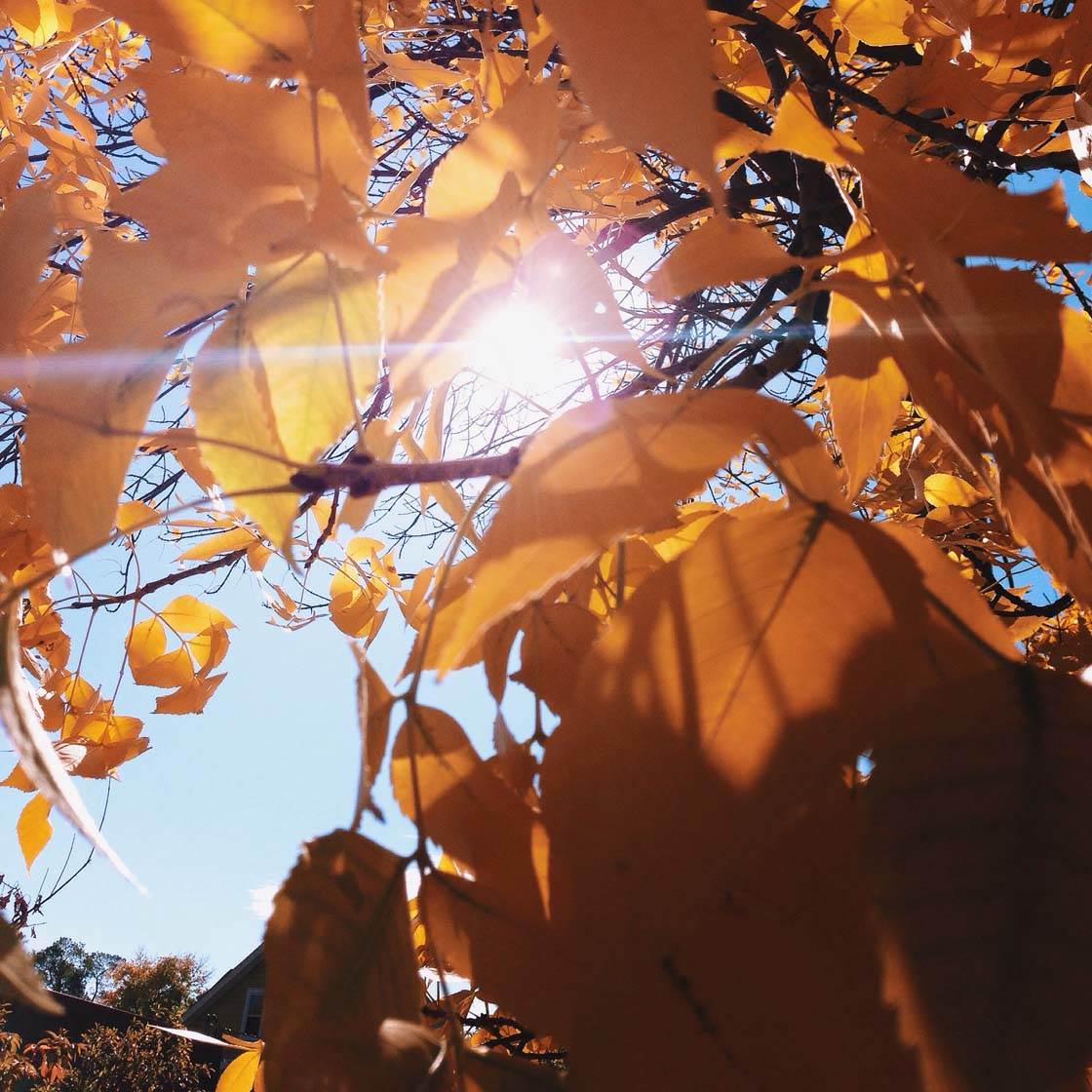
When photographing the sun shining through leaves, don’t forget to step way back and shoot through an entire tree, instead of just a few branches. This is a different kind of “shoot through” photography, but it’s equally effective.
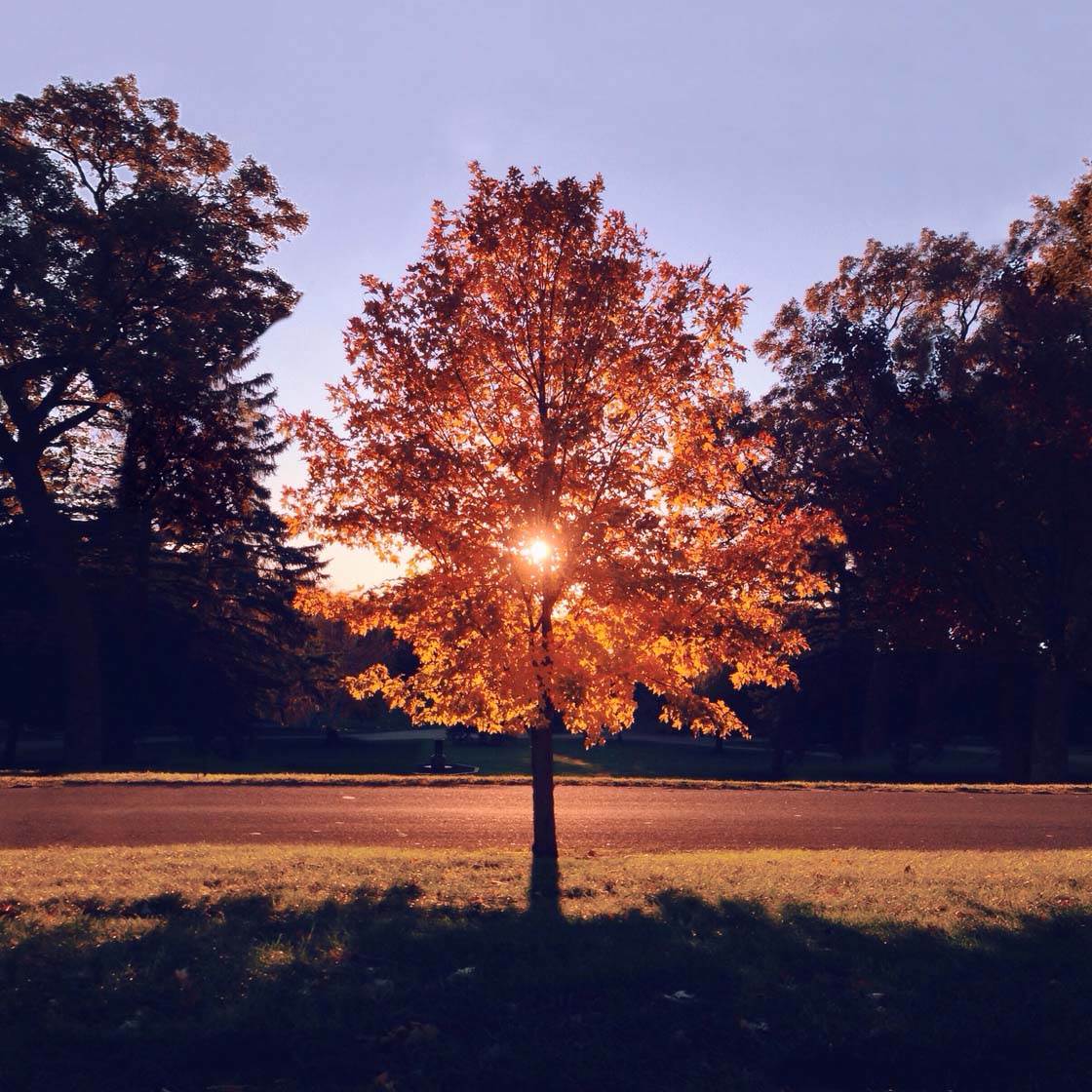
Lastly, be on the lookout for grasses which can be lovely to shoot through. This works particularly well when the sun is low in the sky.

You’ll be able to capture the sun through the grasses, and get some flares when the sun interacts with the grass tops.
9. Other Solid Objects
Although trees are one of the easiest things to shoot through, there are all kinds of other solid objects that you can use as beautiful framing devices for your photos. Framing devices can be natural or manmade.
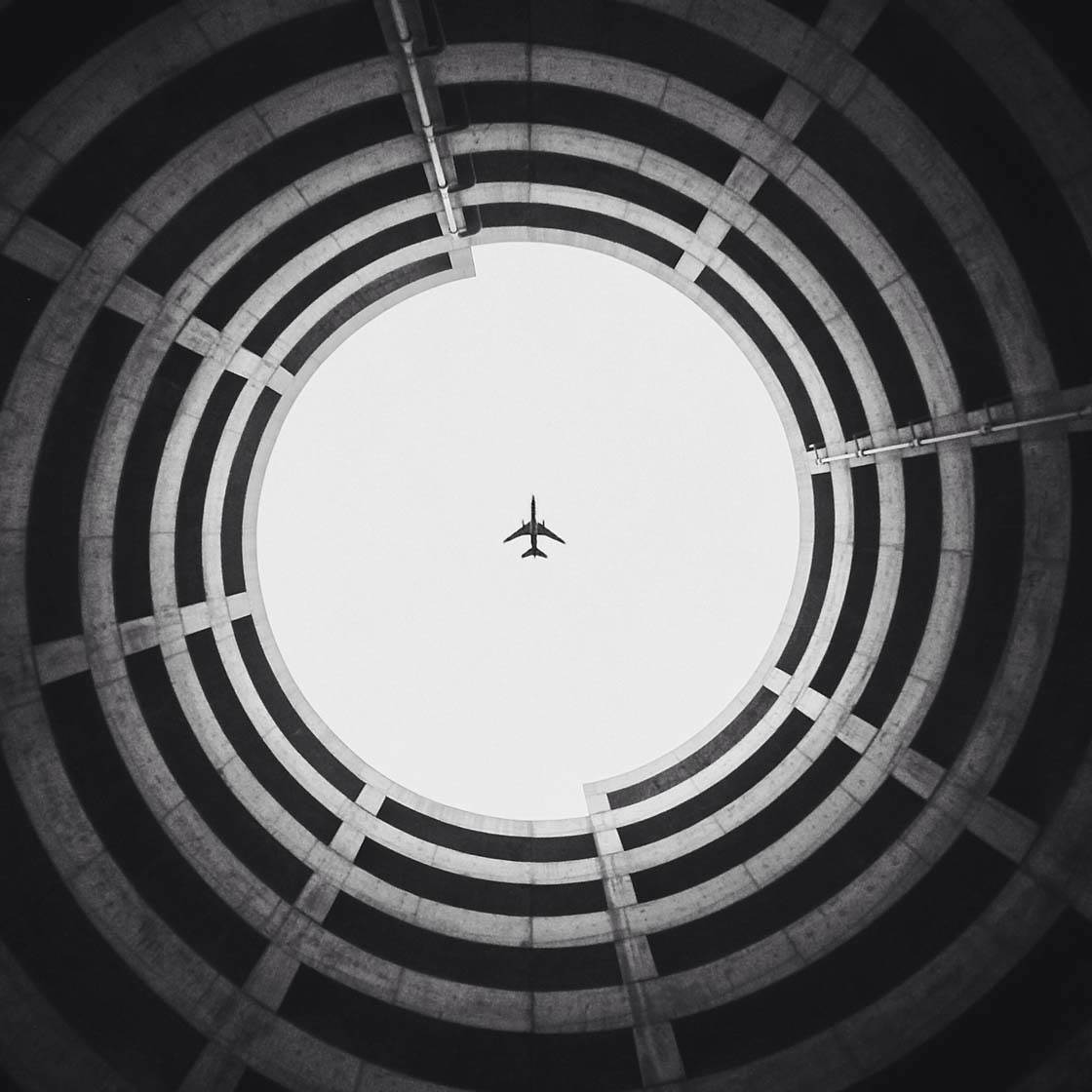
Architecture is a great place to find interesting frames to shoot through. Once you start looking, you’ll begin to notice all kinds of interesting apertures in buildings that you could use as a frame.
If you’re out shooting landscapes, look out for natural frames at your location. In the photo below, I was standing behind a waterfall during wintertime.
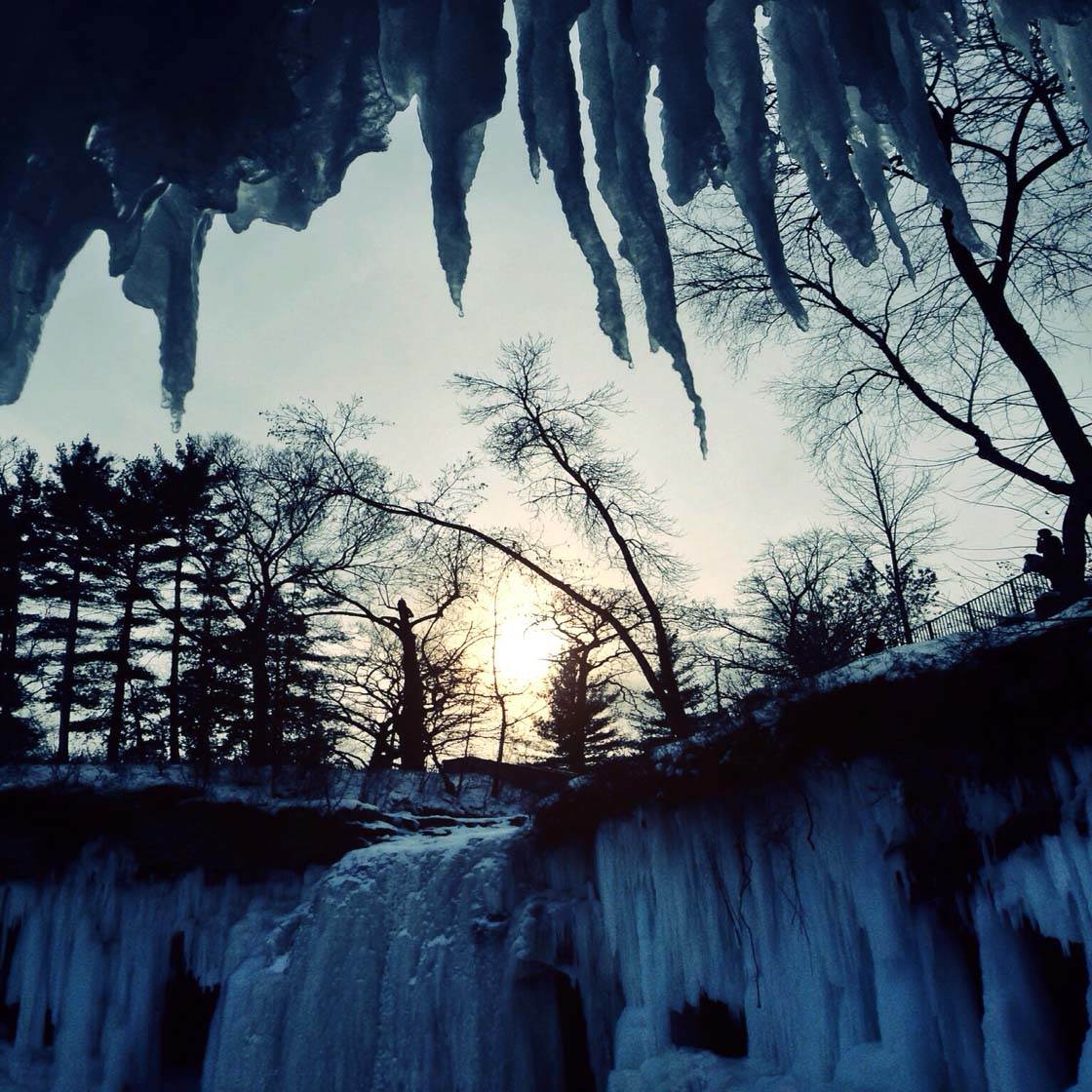
Including the sharp icicles at the top of the photo helped to add extra context to the picture, emphasizing the ruggedness and coldness of winter.
While most of this tutorial has focused on shooting through something to frame your main subjects, sometimes the thing you’re shooting through can be so interesting that it can become the main subject itself.

Look for graphic shapes in the environment that have an open framework. Often it’s helpful to get underneath these types of structures and shoot through them so that the sky peeks through the inside and outside of the framing device.
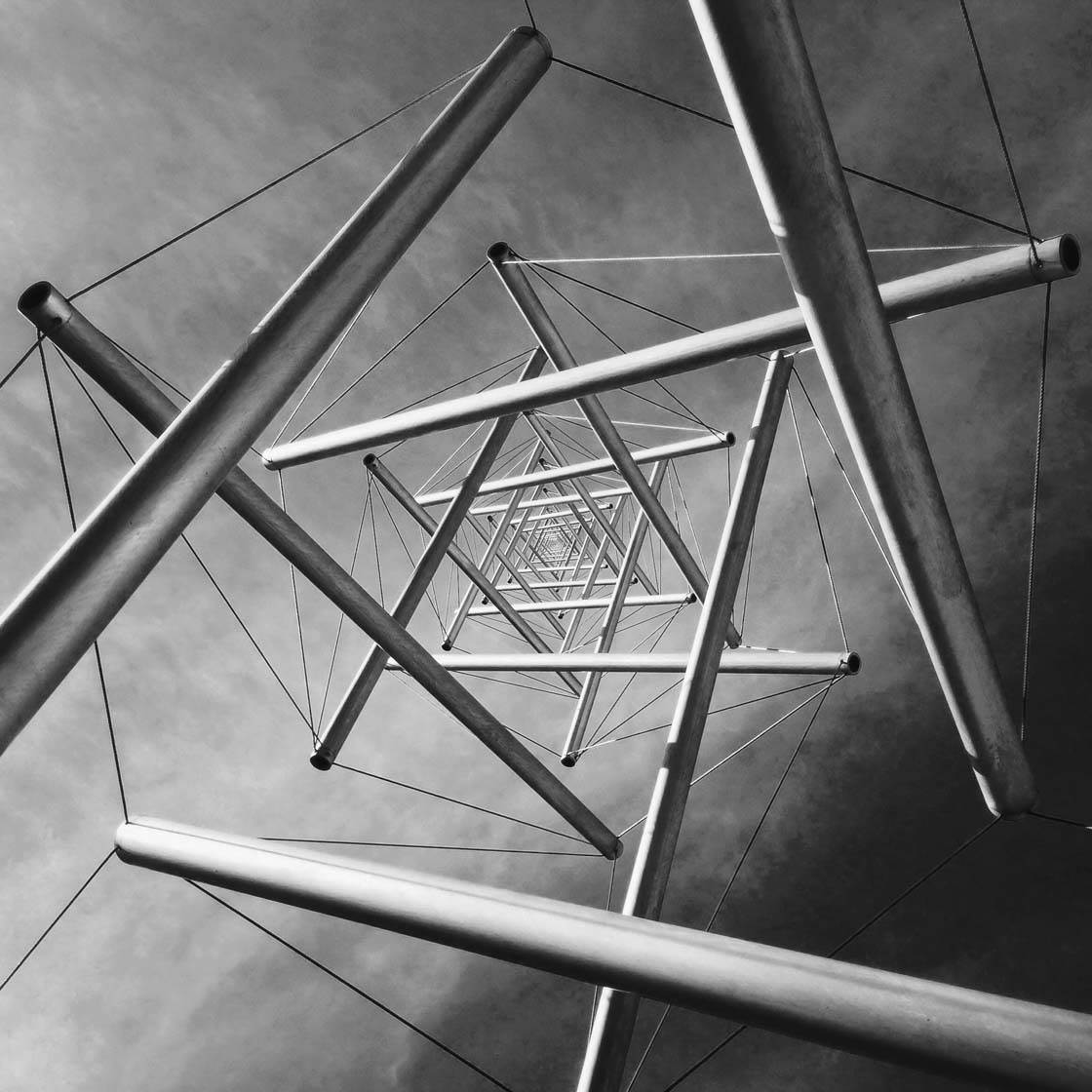
10. Get Creative
Finally, let’s explore a few more ways to get really creative. You can often make interesting photos by using ordinary, everyday objects that you probably have lying around your home.
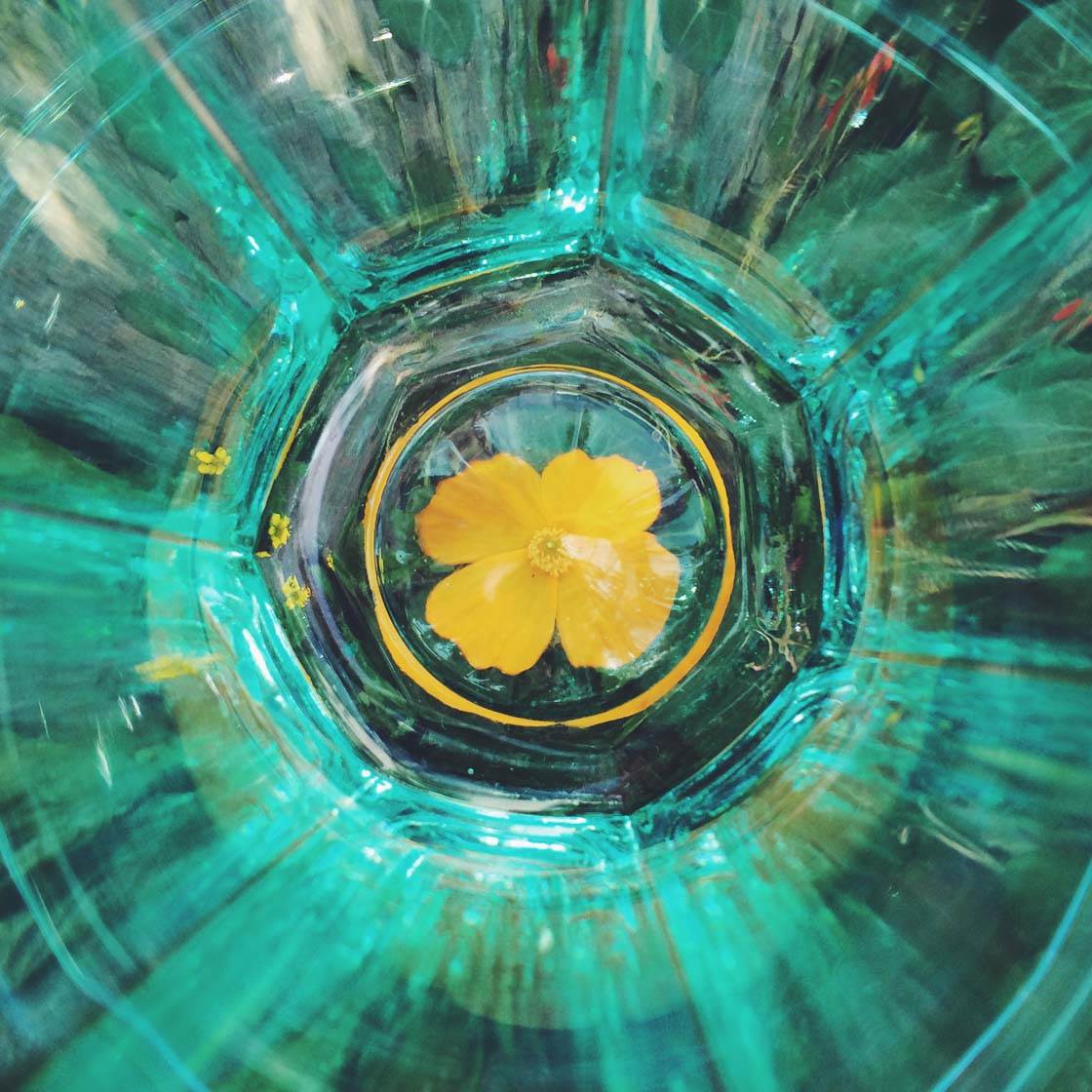
This photo of a yellow flower was shot looking through a green drinking glass. It creates a really unique frame that draws your eye toward the flower and distorts parts of the scene in interesting ways.
Glass bowls with interesting patterns make great “shoot through” objects because they transform the light and emphasize the texture and patterns of the glass.
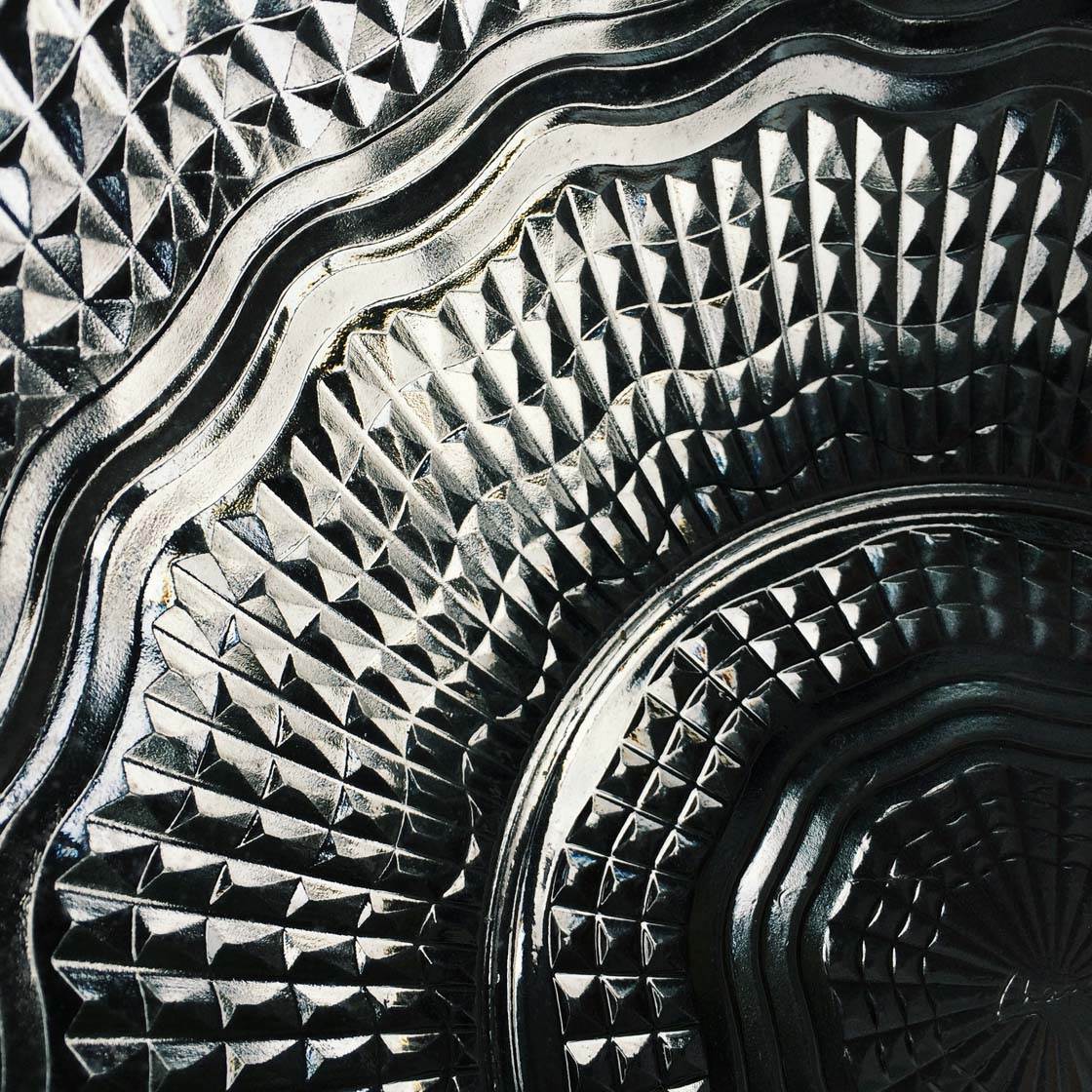
Sometimes you don’t need any kind of main subject because the pattern is beautiful all on its own. Other times you might want to put something on the other side of the object to help make the photo more interesting.
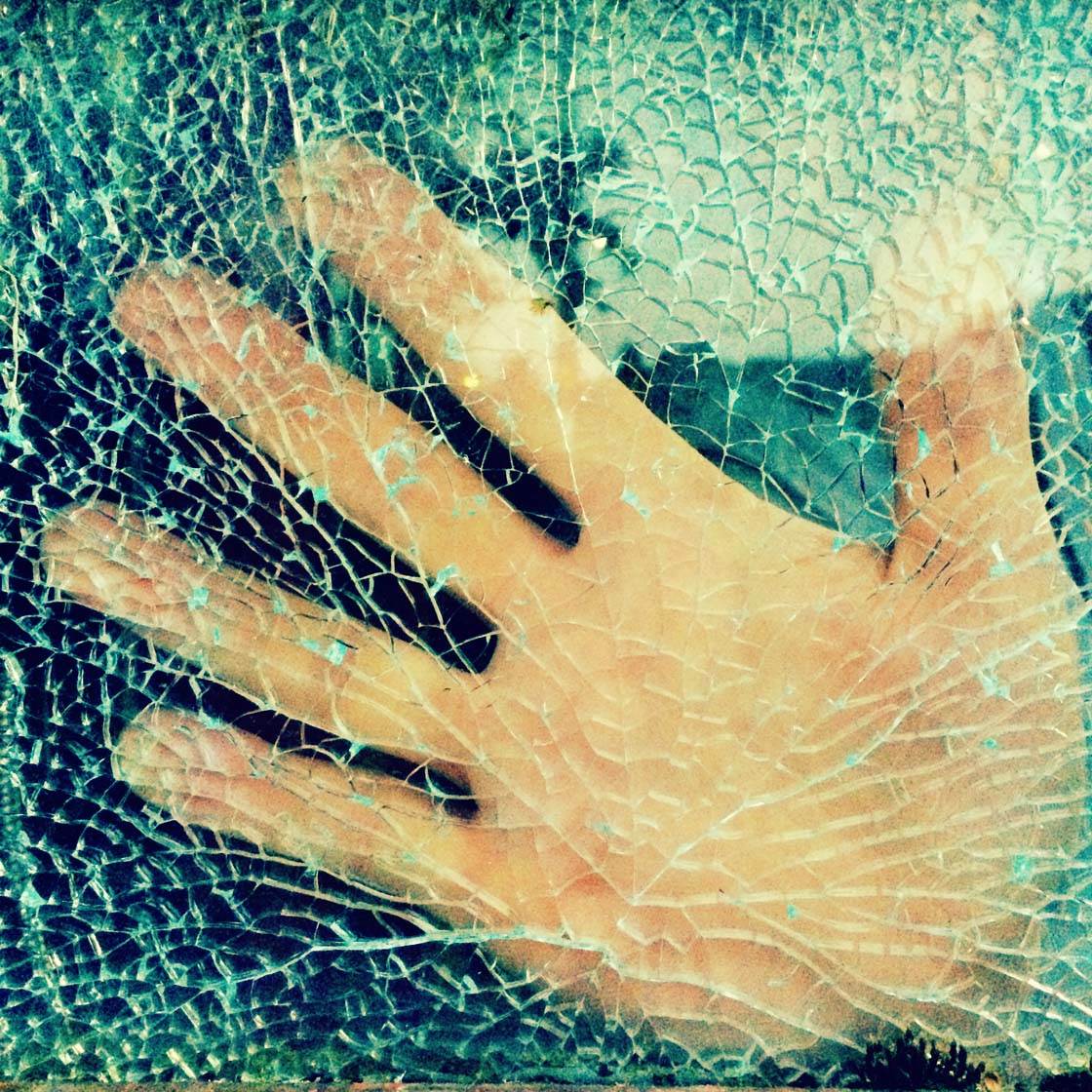
You can also put a subject in front of the “shoot through” object, as shown in the photo below. I put some bubble wrap against a window, letting the sun come through and highlight all the wrinkles in the bubble wrap.
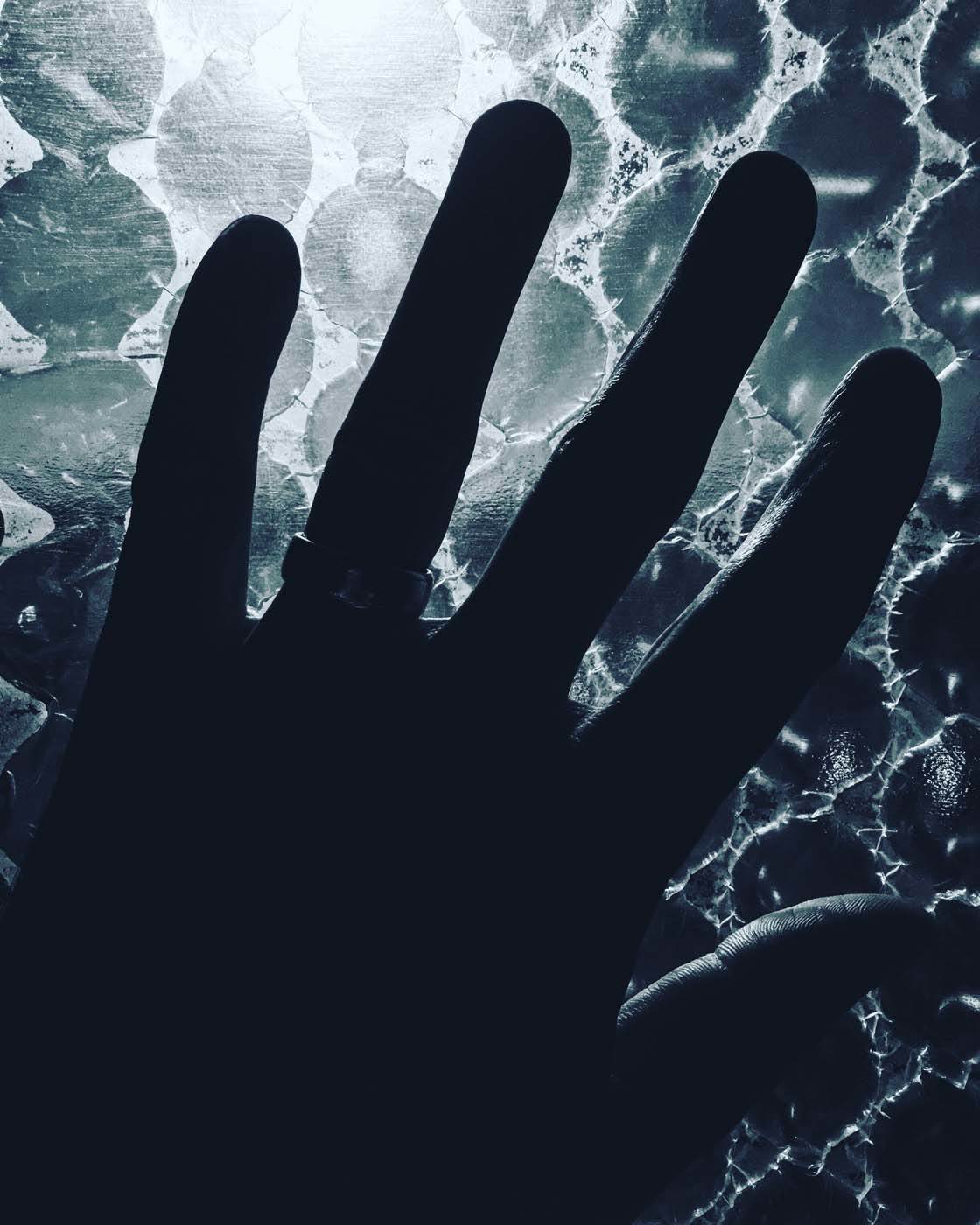
While the bubble wrap made a great photo in itself, using my hand as a silhouette in front of it provides a counterpoint and helps to ground this abstract image.
You can also look for opportunities to shoot through clear glass when you’re in an usual situation, like going through a car wash. These types of shots would be impossible get unless you were shooting through glass.
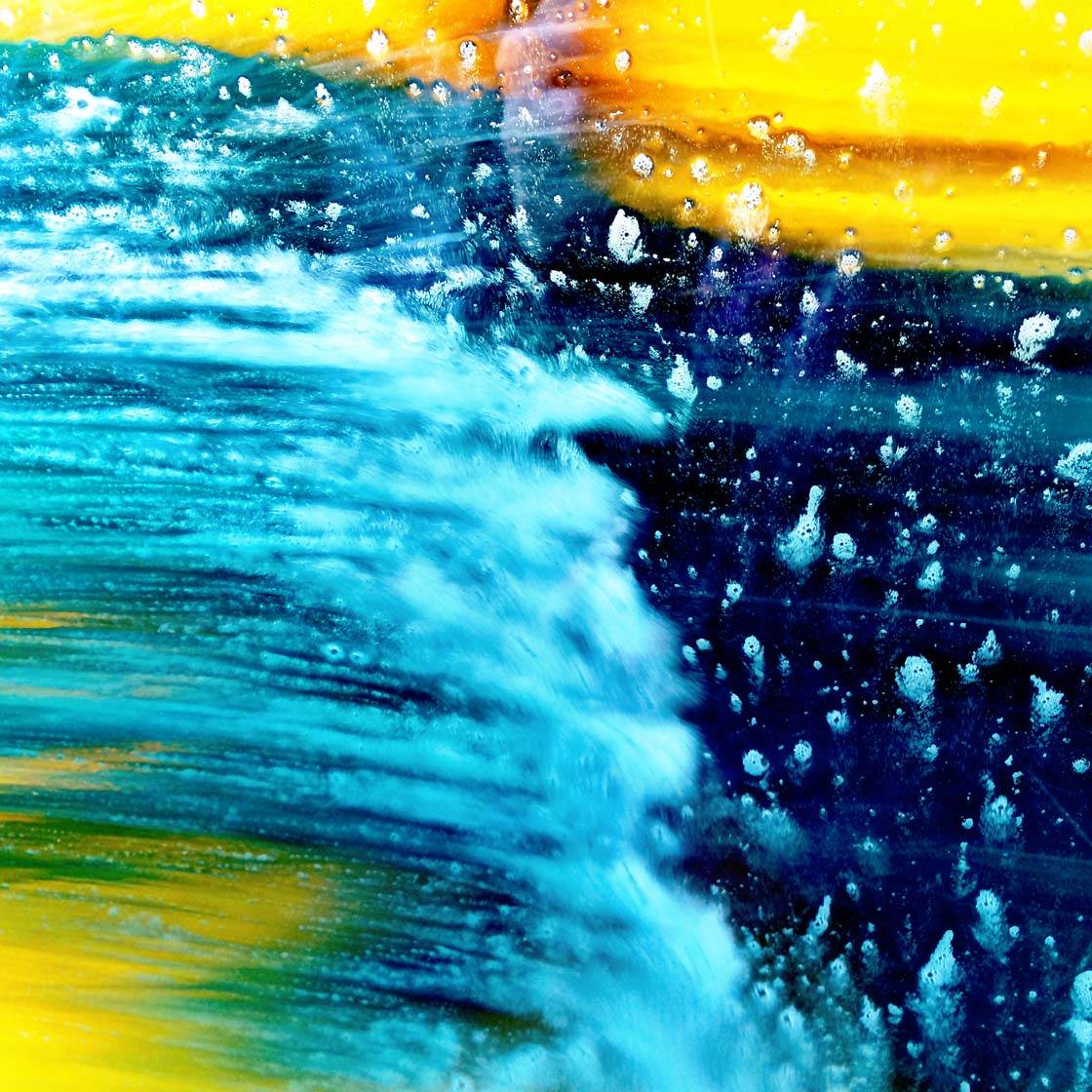
Lastly, you can also create your own scenes with some creative thinking. Let’s say you want to do a rainy-day photo, but you don’t actually have a window with raindrops in the place where you want it.
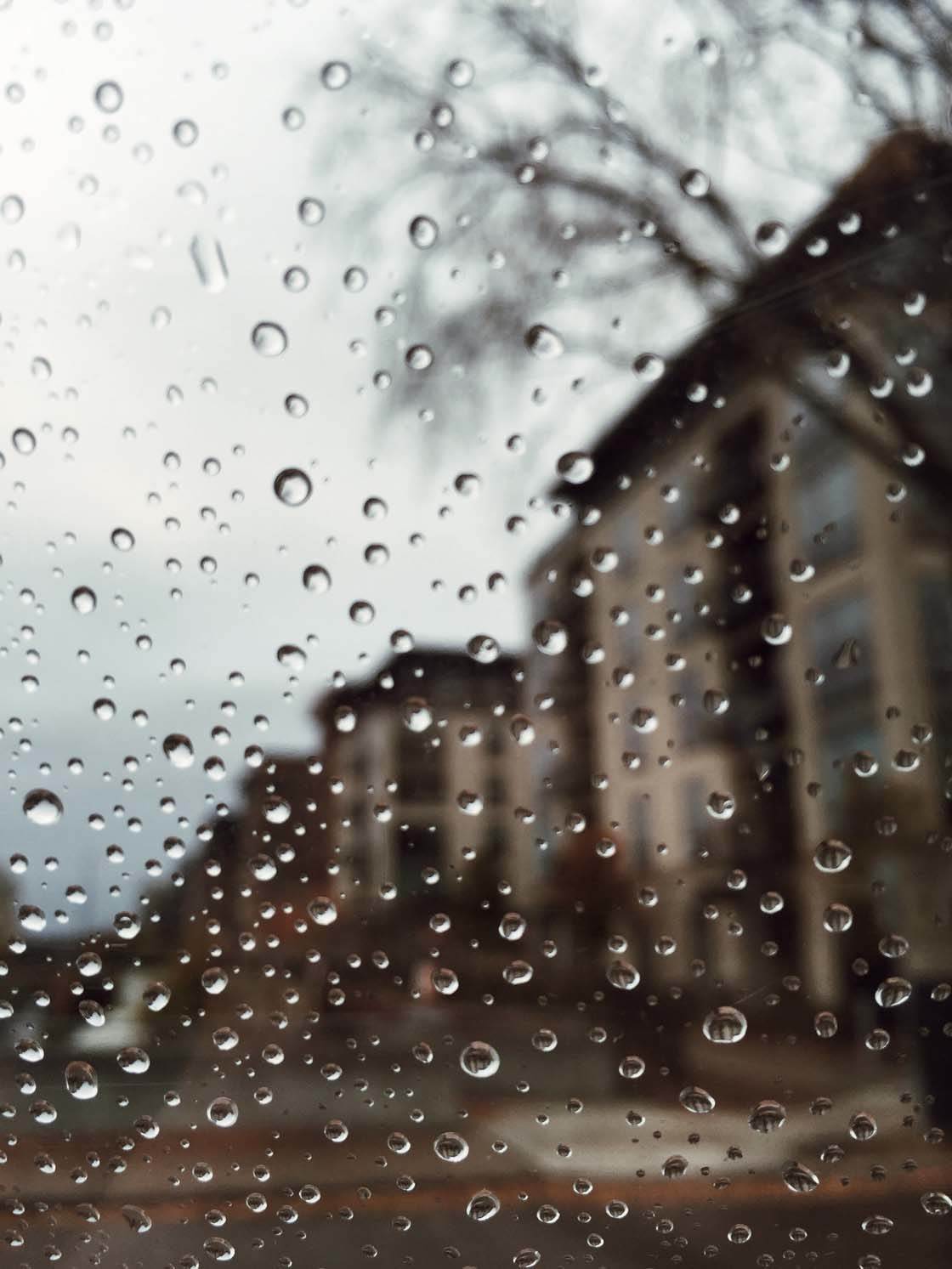
It’s very easy to create your own “window” by using a CD case that you spray with water. This is exactly what I did to create the photo shown above.
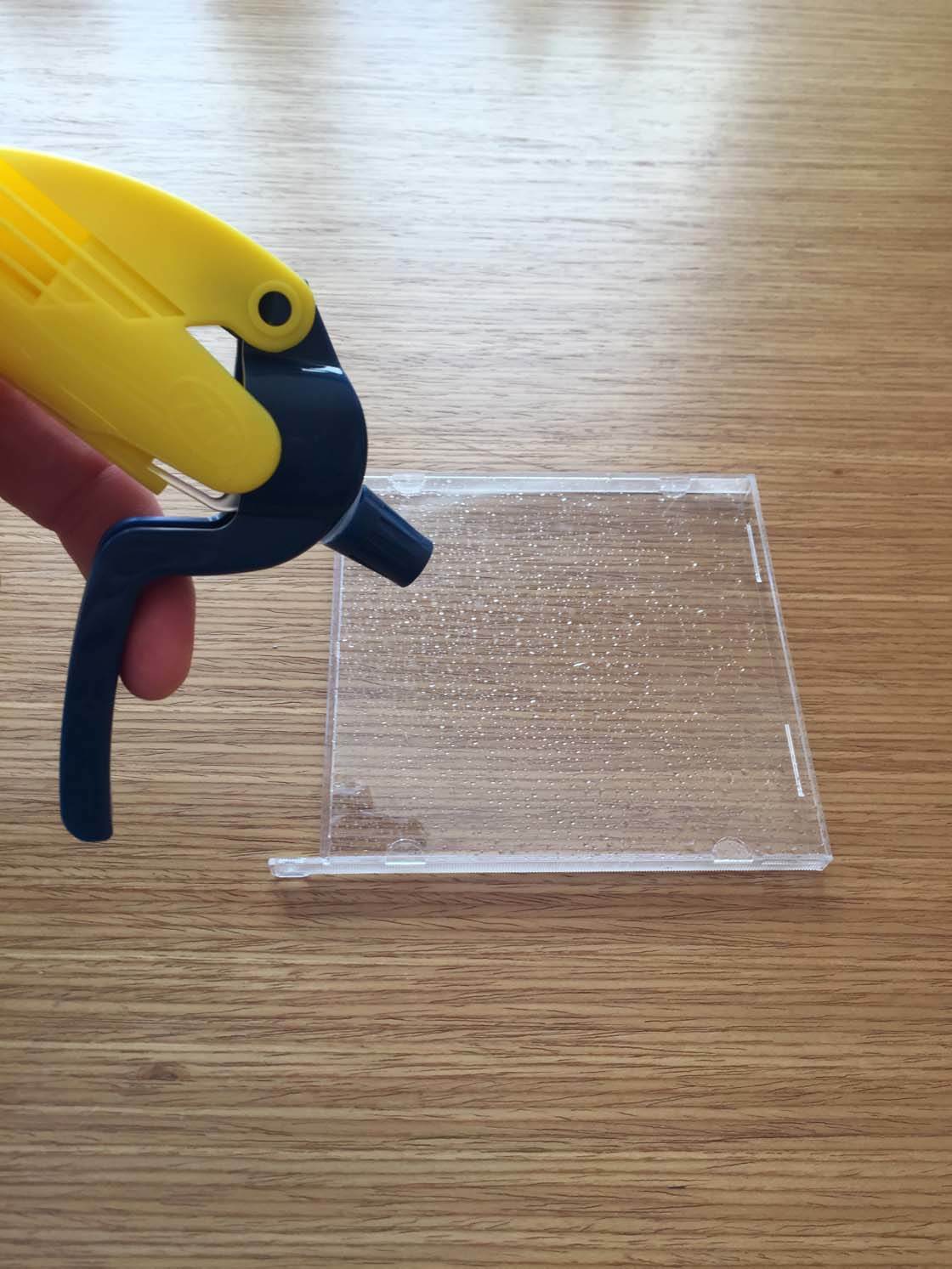
I simply sprayed some water onto a clear plastic CD case, then brought it outside to look for an interesting subject to capture through the “window.”
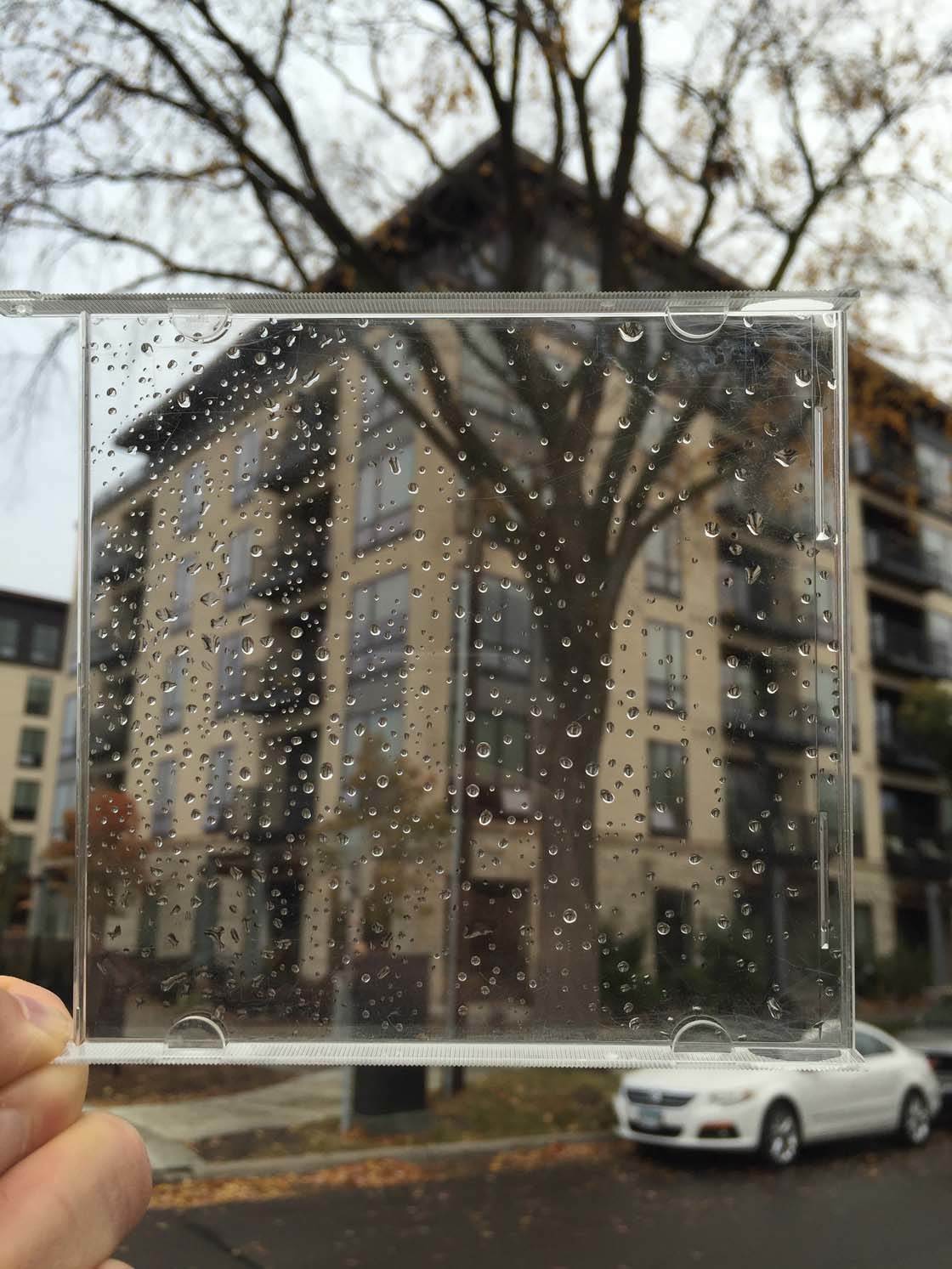
Why not take a look around you right now, and see how many ordinary objects you can find that you could shoot through? Experiment and let your creativity run wild.
Conclusion
By now you should have all kinds of ideas about different objects that you could shoot through. Glass is a really great material that offers lots of photographic opportunities.
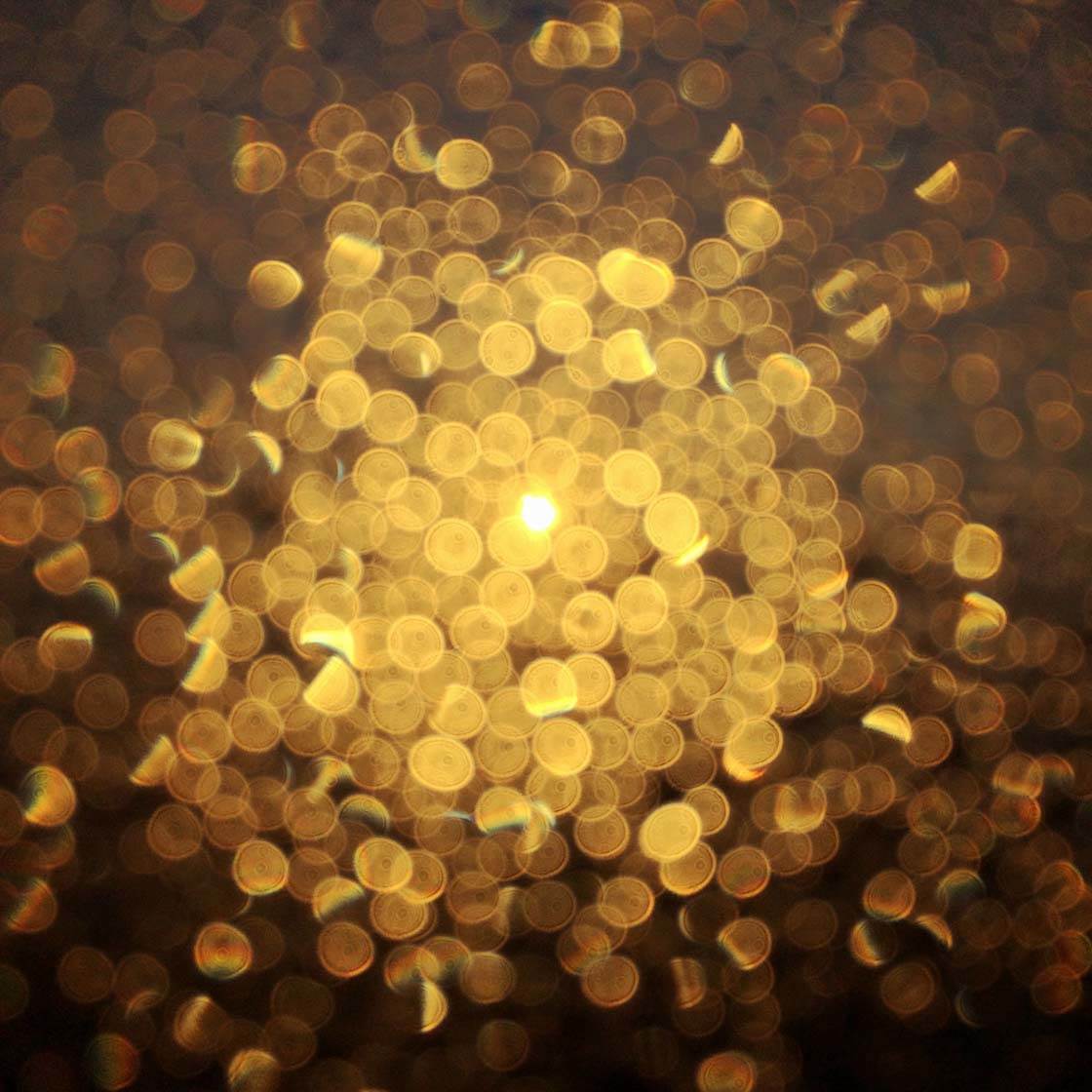
Look out for glass that’s clear, textured, frosted, colored, patterned, covered in water droplets, or somehow altered. You can also use other clear glass objects like orbs and prisms that will distort your subject in interesting ways.
You can also use solid objects to shoot through, like windows, doorways, trees, grasses, and other interesting architectural shapes. Both man-made and natural objects offer plenty of opportunities for finding “shoot-through” objects.
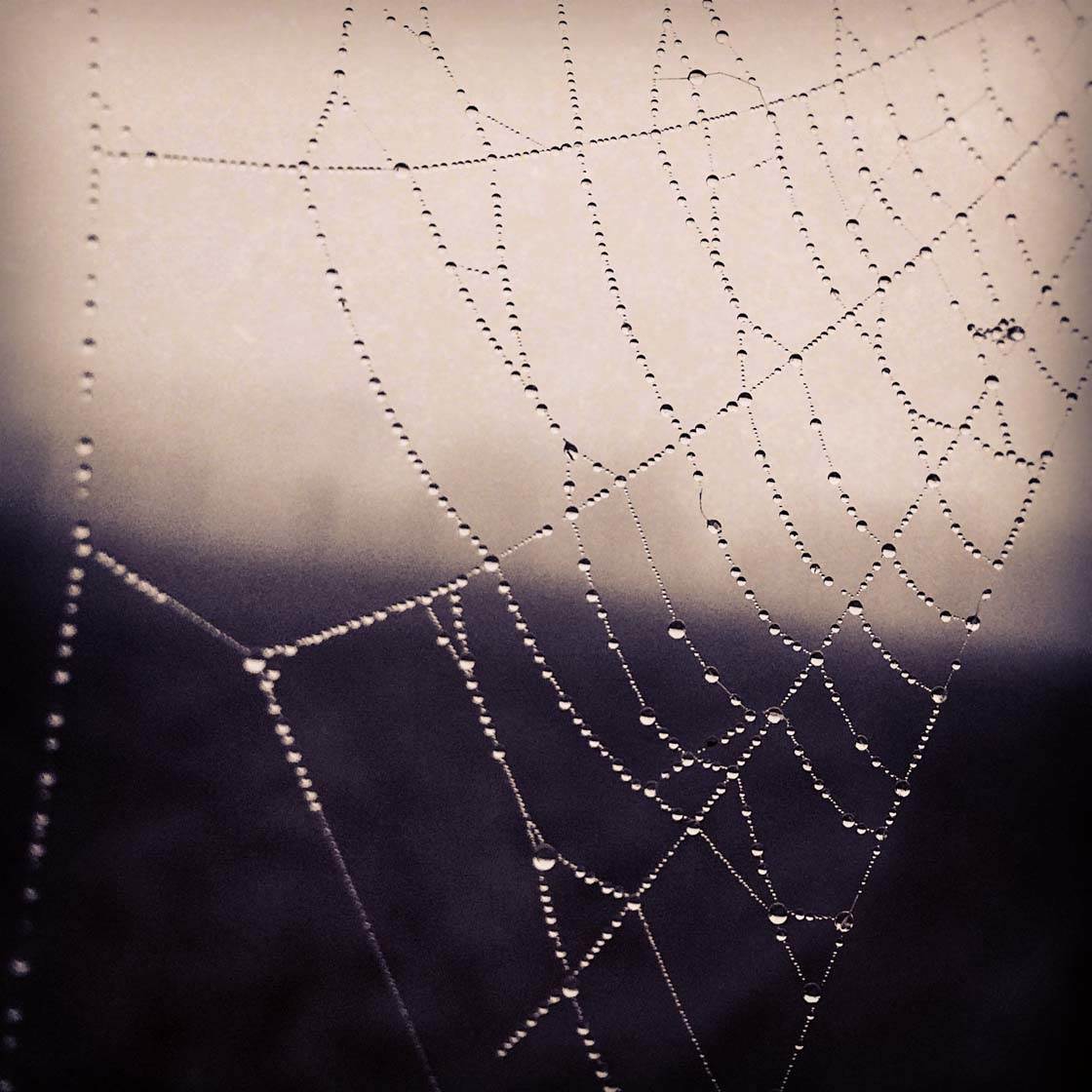
Lastly, you can get creative by looking for items around your house that you can shoot through. Any of these methods will get your creative juices flowing and allow you to make more interesting iPhone photos.
Why not challenge yourself right now to find at least one object to shoot through. Experiment with different ways to shoot it, and you’re sure to create something truly unique.


Love all these ideas, can’t wait to experiment with my iPhone now
Glad you found them inspiring. Have fun experimenting! 🙂
That’s got the creative Juices flowing…. Thank you